Bad roads, a short beach holiday and a nice reunion in Kyrgyzstan (50)
After our first impressions of Central Asia in Kazakhstan (blog about the heatwave in Kazakhstan), we couldn't wait to get to know the beautiful scenery and lovely peculiarities of the other Central Asian countries. Next on the agenda was Kyrgyzstan, where we end up on a very bad gravel road as soon as we crossed the Karkara border. It’s supposed to be the main road into the country, but it doesn’t look like it and there’s no trace of asphalt coming anytime soon. Our next destination is the city of Karakol, but we decide to make a detour to Jyrgalan on the way. Our way leads over a steep gravel road where we need to push our bicycles. As soon as we reach the top of the pass, it starts raining. Not an ideal start for our Kyrgyzstan trip, but the landscape compensates for everything. We cycle through a remote valley where many locals live in their yurts during the summer. No tourist yurts far and wide, we experience the authentic Kyrgyzstan on the very first day. But exactly this makes it hard to find a place to camp as every flat spot is occupied by a yurt. When we finally do find a place, Joan, a bikepacker from France, suddenly passes us. We’ve met him on the flight from Tbilisi to Almaty. He travels with light weight and is much faster than us, but at least we can enjoy a nice evening together before we have to part again. In general, we see much more tourists this summer than in the two years before and especially in Kyrgyzstan we now meet other long-distance cyclists on a daily basis.
Jyrgalan: A Kyrgyz Switzerland with yurts tucked away in the mountains
The small village of Jyrgalan is hidden away in the far-eastern part of the country at the end of a valley. Until the beginning of the nineties, the locals lived from coal mining, of which a mine still bears witness. After the collapse of the Soviet Union, this industry came to a standstill and people started to abandon the village in search of new work. But then with the support of the American development agency USAID the sleepy village found a new life as an eco-tourism base and the income from the tourism sector benefits the entire community. A handful of guesthouses opened and hikes and horse treks can be arranged. However, the high season is in winter, when winter sports enthusiasts invade and enjoy the pristine powder snow. Since there are no ski lifts in Jyrgalan, horses take over the task of transporting winter sports enthusiasts up the mountain. This is probably unique in the world and can only happen in a horse-loving country such as Kyrgyzstan.
Kyrgyz from the cities also like to come to Jyrgalan, but not for the hiking and skiing, but for a special detox cure à la Kyrgyzstan where they drink Kumis, fermented mare's milk, every day. However, anyone who now assumes that this up- and coming adventure place is an established tourist destination will be surprised when they arrive in the village. We had the feeling we were discovering a place that is just cautiously opening up to tourism. The dirt roads turn into muddy tracks when it rains, the infrastructure consists of a mosque, a school and three small stores, and in the evening, there are more cows than people on the road. Needless to say, we like it immediately.
We stay three nights in the Ala-Kol Guesthouse and hike to Turnalu Lake and a hidden waterfall. The landscape with its forests, green meadows and the cows everywhere reminds us strongly of Switzerland and we enjoy it very much to be hiking through such a green scenery, a complete contrast to the canyons in Kazakhstan. And in the evenings, we get to taste the Kyrgyz cuisine for the first time and it’s better and more varied than expected. Especially the delicious dish Oromo is worth mentioning, a kind of steamed dumpling filled with onions, cabbage and carrots and served with sour cream on top.
Hot springs, cold soups and a nice reunion in Karakol
I have to admit I’ve been to Kyrgyzstan and Uzbekistan five years ago and I remembered Karakol (84'000 inhabitants) as a rather sleepy place without much tourist infrastructure. The village character has definitely remained apart from the main road, but the lively town with its tree-lined streets and parks has become a popular base for hiking in recent years and some nice cafes / restaurants have opened. The main attraction is the Holy Trinity Cathedral, a beautiful wooden building with green-roofed towers and almost-golden onion domes.
We come to Karakol in the first place to meet with Lukas from Sense of Travel and his travel group from Switzerland. On the one hand we finally have a good camera again, on the other hand we’re allowed to join the group and thus get to see very unique places that we couldn’t have visited as individual travelers. We visit the saddler Almat, who makes quality saddles to order in family tradition, a craft about which we knew nothing before. And since we’re in the land of horses and nomads, it’s not surprising that he can still make a living from this profession and even receives well-paid orders from abroad. A good saddle can last for several decades and is still considered a status symbol in Kyrgyzstan and is a popular wedding gift.
We also learn more about the Dungan culture. The term Dungan was used in the Soviet Union to refer to Muslim immigrants from the Chinese province of Xinjiang who came to Central Asia in the 19th century and have remained to this day. Fortunately, they didn’t only keep their culture and traditions, but also their distinct cuisine. As a result, in Karakol there is an opportunity to try some very special delicious dishes that differ from the usual dishes in the area and you could say it’s almost a destination for foodies (for Central Asian standards).
One of the culinary highlights for us is the dish Ashlan-Fu, a spicy cold vegetarian noodle soup with garlic, chili and chives. The ideal place to taste Ashlan-Fu is at one of the small stalls at the market, where you’ll get your soup together with a Piroshki, a fried bread filled with potatoes or you can book a cultural tour via Destination Karakol. In the evening, we’re invited to dinner with a Dungan family and besides Ashlan-Fu, numerous other dishes from the Dungan cuisine await us here and it turns out to be the most delicious traditional dinner in Central Asia for us. After dinner, we also get to learn more about the Dungan culture, their dresses and wedding ceremonies. A perfect ending to a wonderful evening.
We also make a trip to public hot springs near Altyn-Arashan. The springs are very popular with the locals and the pools are full of happy children splashing around. It’s a delight to relax in the hot water after cycling many kilometers and we’ve been looking forward to this moment. Afterwards we cool down with a bucket of ice-cold water from the river.
After so much relaxation, we consider doing the popular multi-day hike to the mountain lake Ala-Kol, but we would’ve to rent backpacks and a lighter tent especially for this and besides, the weather is not on our side and it could rain and snow further up. We decide to continue our journey on our bikes. We say goodbye to Lukas and the travel group and continue to Issyk-Kul, the second largest and second highest mountain lake in the world (after Lake Titicaca).
Short beach holiday at Issyk-Kul and a petrified dragon
The name Issyk-Kul means "hot lake", because of its depth, thermal activity and mild salinity the lake doesn’t freeze even in winter. The extensive sandy beaches, clear water and the peaks of the Tian Shan form a remarkable backdrop and between June and September numerous visitors from Kyrgyzstan and the surrounding countries flock to the lake, especially to Cholpan-Ata, the most famous resort on the north coast. However, we limit ourselves to the less developed south coast. While we had regular rain showers during the first days in Kyrgyzstan, now the weather improves and we get a real summer feeling as we drive along the lake. We cycle along numerous villages and the beaches are full with locals. Once we pass a group of children sitting on a donkey cart that is taking them to the beach and they seem to have a lot of fun. Less fun is the road as there’s a huge construction site with many potholes and dust in the air. It’s nevertheless wonderful to cycle from beach to beach and we decide to enjoy a rest day by the lake since we won’t get to spend time by the sea this summer.
We move into our first yurt on the trip at the Tosor Yurt Camp and fall asleep in the evening wrapped in thick blankets below the wooden Tunduk, the open yurt roof. One feels wonderfully secure in such a yurt and we decide on the spot, that this won’t be our last yurt stay in Kyrgyzstan. The sandy beach is directly in front of our yurt camp and we could spend days here, but it’s best to let the pictures speak for themselves.
We enjoy being lazy and relaxing by the lake and consider staying another night, but since it’s high season, the camp is already fully booked. So, we continue and visit the backcountry of the Issyk-Kul. We make a detour to the beautiful forested valley Jety-Oguz and have a wonderful campsite with mountain views besides summer yurt camps. The valley is also known for its red-rock bluffs and the combination of green and red tones is unique. But there is also a daily portion of orange for us, because we pass numerous apricot and sea buckthorn trees which provide a perfect healthy snack.
Another short detour from the lake brings us to the Skazka Canyon, which is also known as Fairy Tale Canyon due to its strange rock formations that resemble animals and castles. You can walk between shades of white, yellow, red and orange and all the colors are even more impressive when you visit the canyon before sunrise and at sunset.
At this point it’s perhaps worth mentioning that the Kyrgyz have a penchant for legends and every lake seems to be more than meets the eyes and also this canyon isn’t just a simple canyon formed over millions of years by wind and weather. Instead, a dragon is to blame. According to legend, there used to be several cities in the area of today's Issyk-Kul and the dragon fell in love with a young woman from the city who rejected him (hard times). He couldn’t let that sit on him and therefore cursed the valley, causing a flood and today's Issyk-Kul. However, when he saw the extent of the destruction, he was so frightened by it that he turned himself and everything around him into stone, of which the special rock formations in the canyon still bear witness today. One of them resembles the Great Wall of China, but we’re not sure what the Wall of China was doing here when the dragon turned everything into stone…aren’t such stories just wonderful? Mankind always looks for explanations for special forces of nature, but the Kyrgyz seem to be particularly creative.
Wind and dust on the way to Kochkor
After a few days we leave the Issyk-Kol and finally turn off from the tedious construction site onto a small dirt road. But the joy doesn’t last as we cycle along another construction site which means lots of dust and additionally a strong headwind. Today should’ve been an easy stretch with 70 km of cycling and few altitude meters, but because of the wind it turns out to be an extremely hard day and we arrive completely exhausted in Kochkor. On the way we meet Tobi from Germany, whom we already met in Tbilisi and at Skazka Canyon. We both have the same destination planned, the magical Song-Kul Lake up in the mountains, but first we have to buy plenty of food in Kochkor for the next hard stage through the mountains. More about our time in beautiful Kyrgyzstan in our next blog.

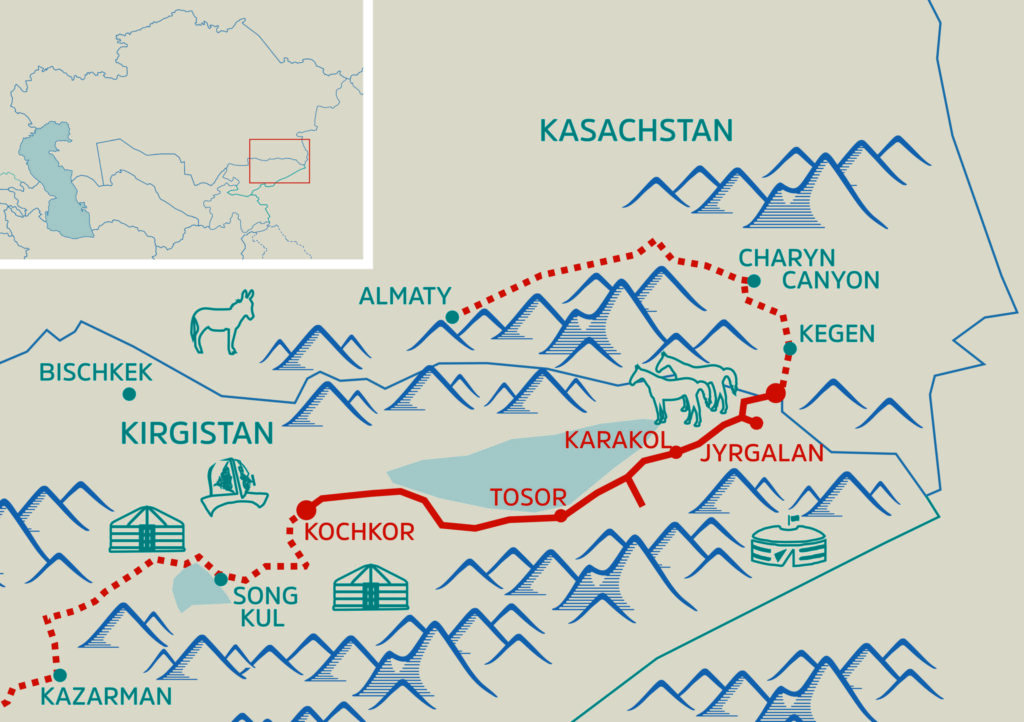
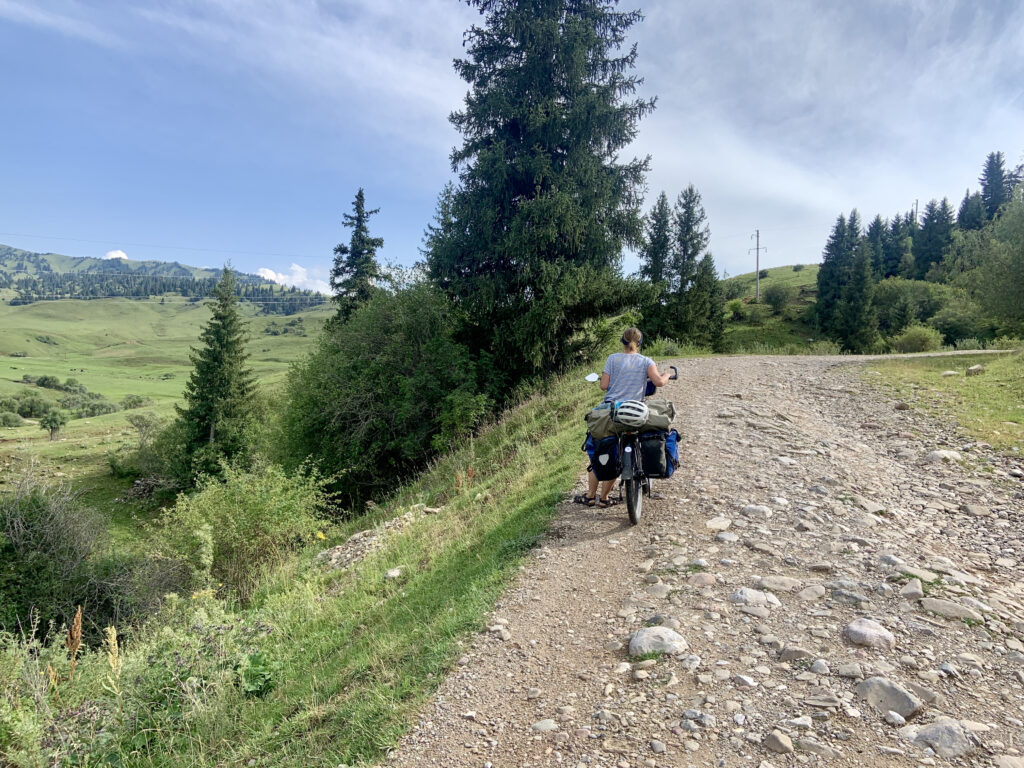
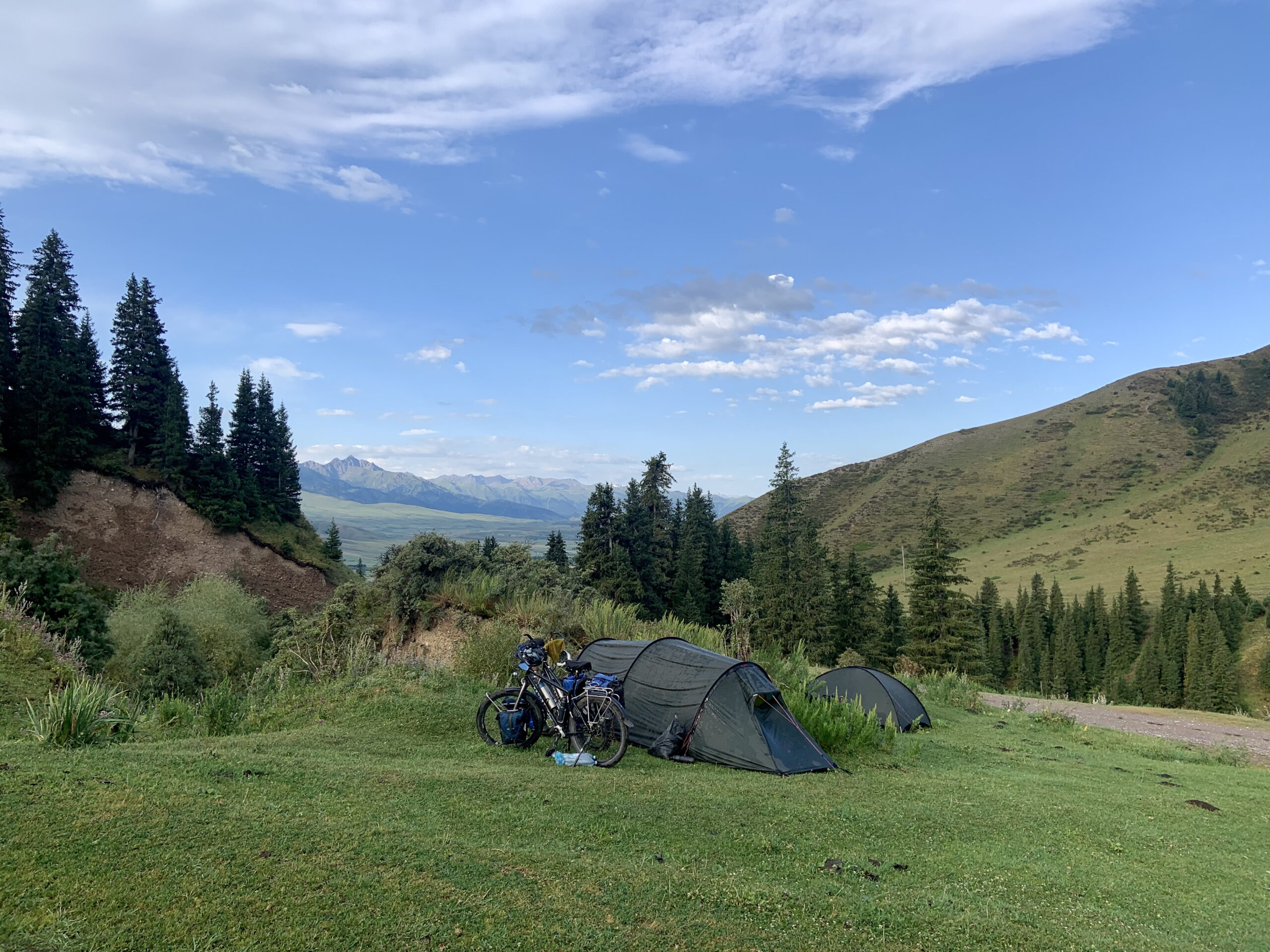
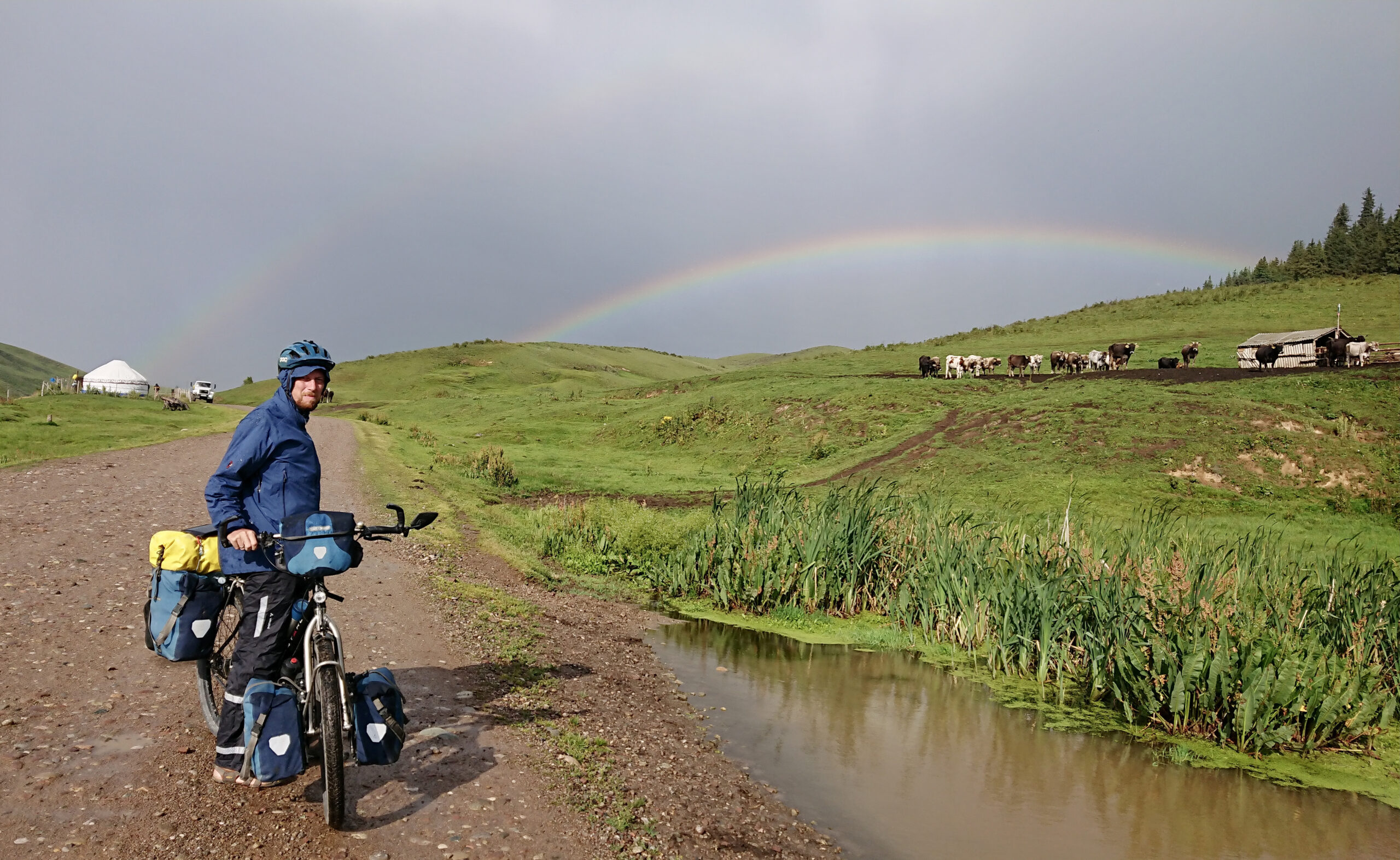
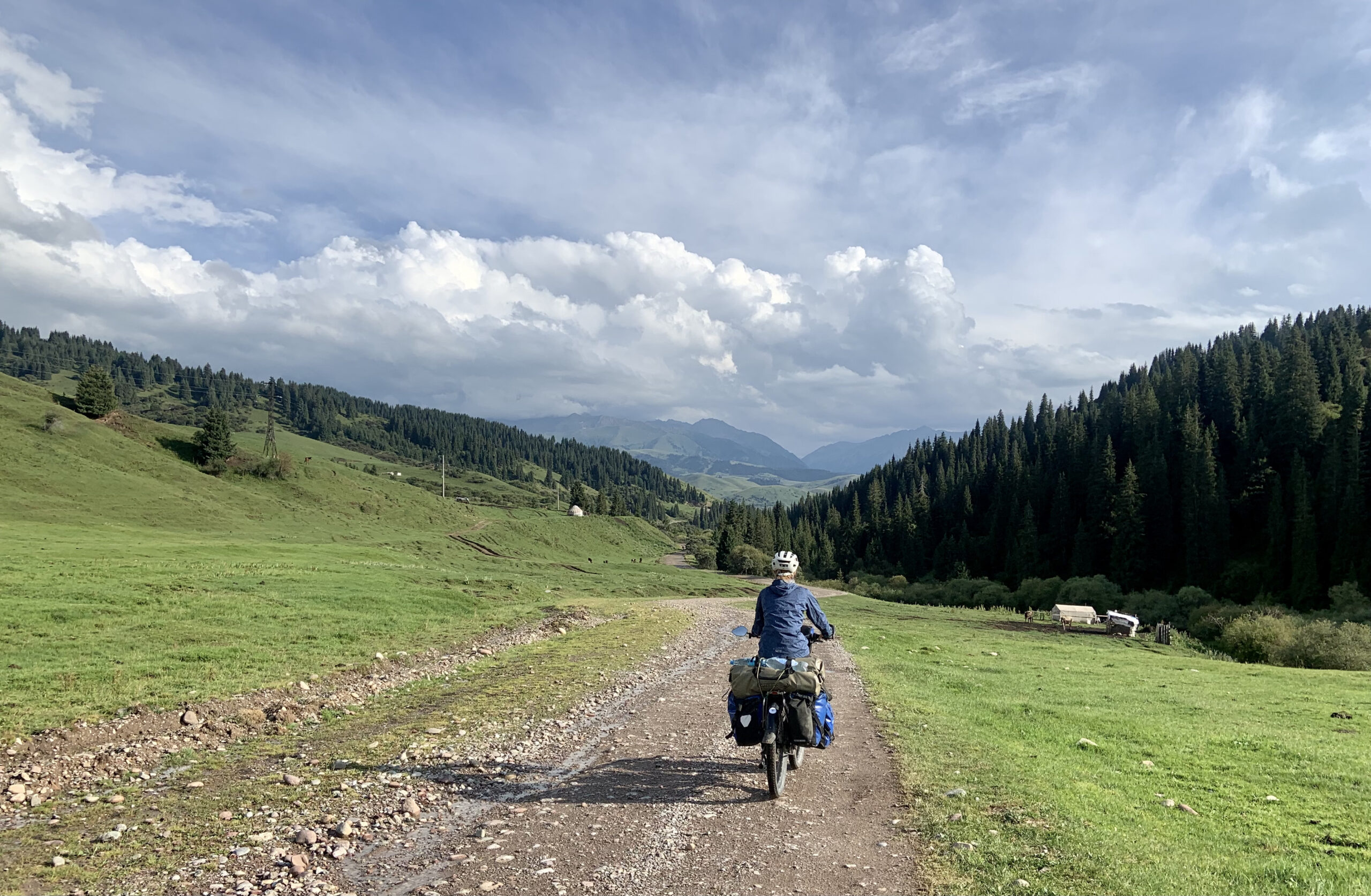
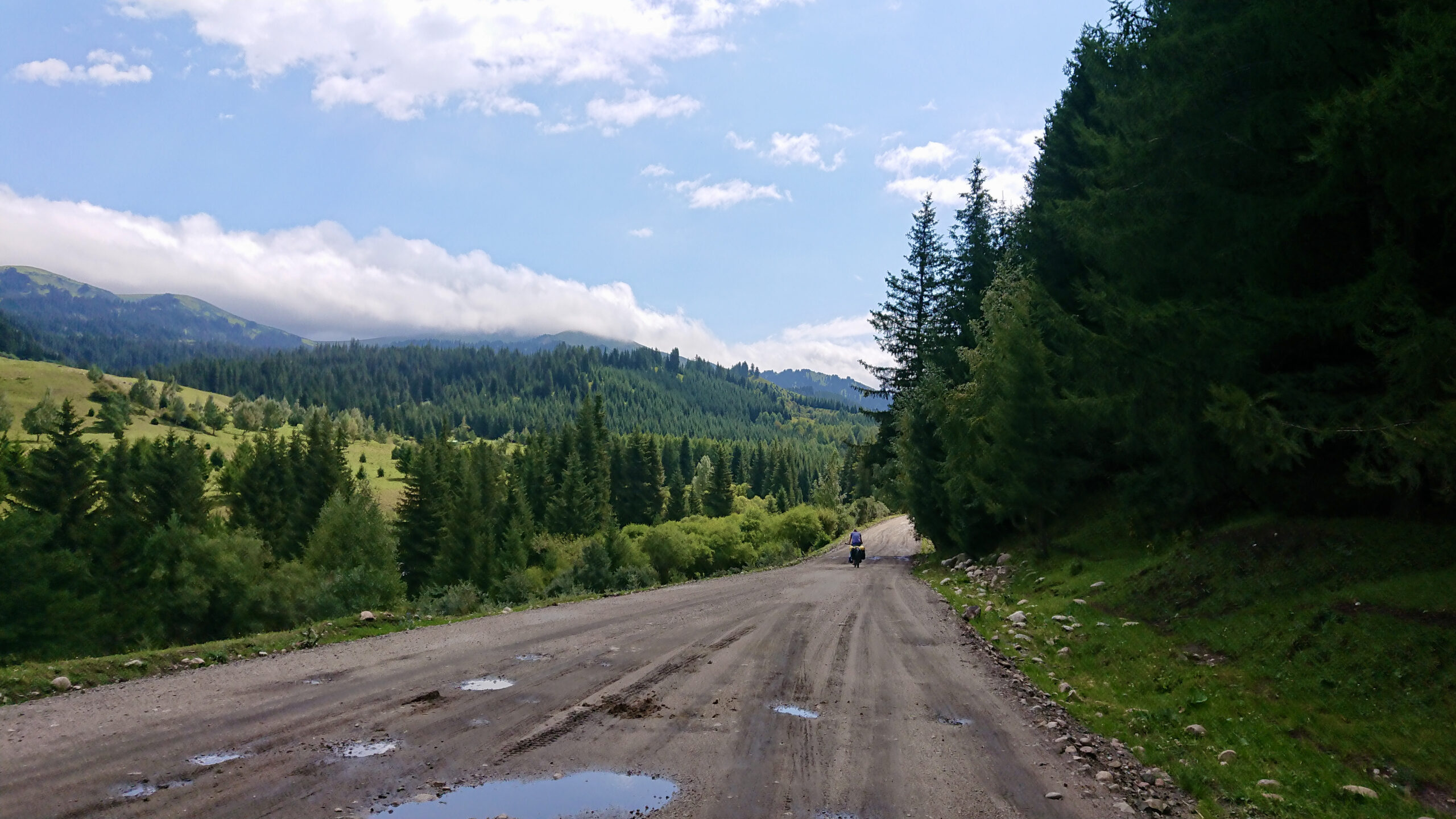
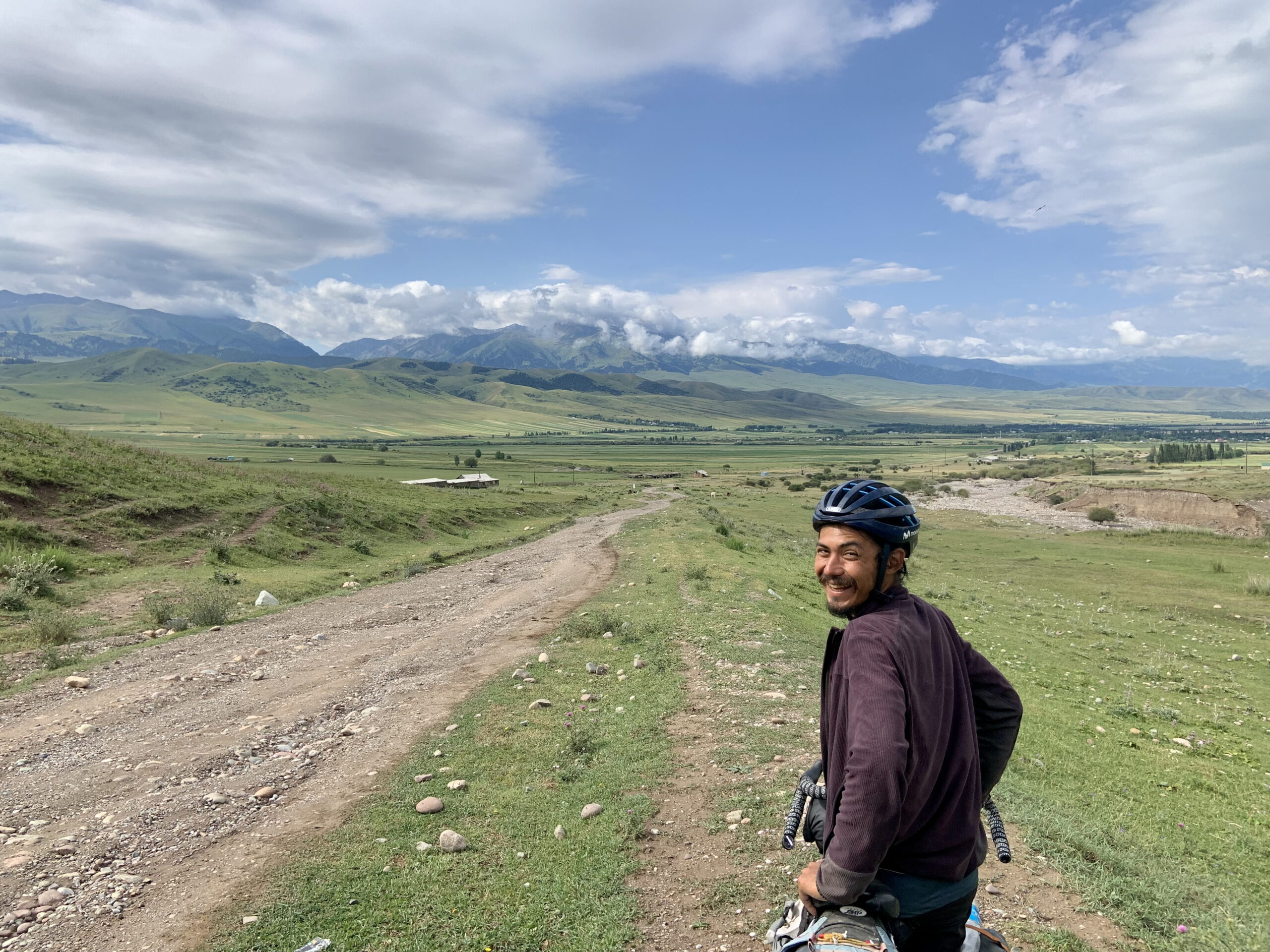
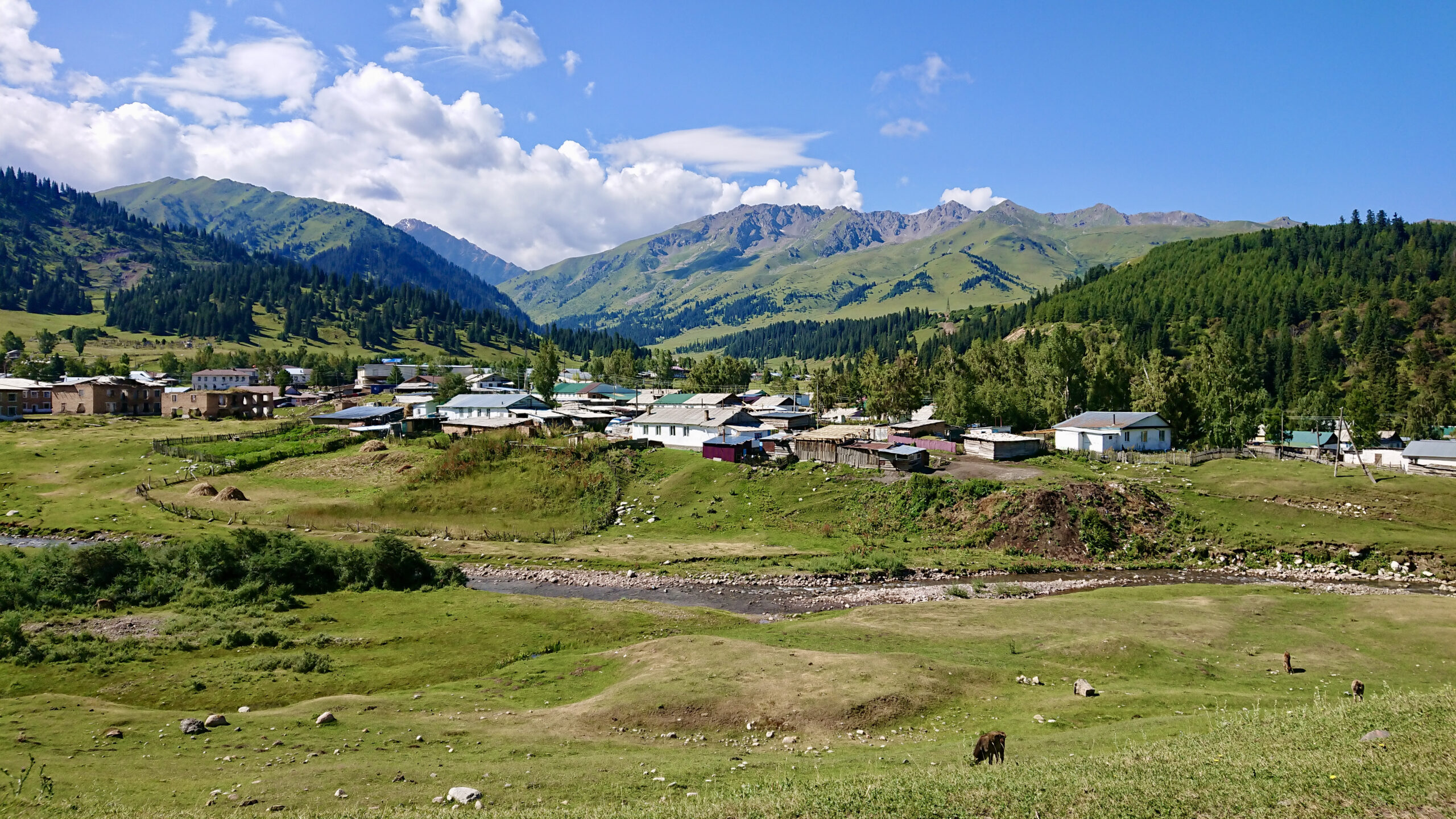
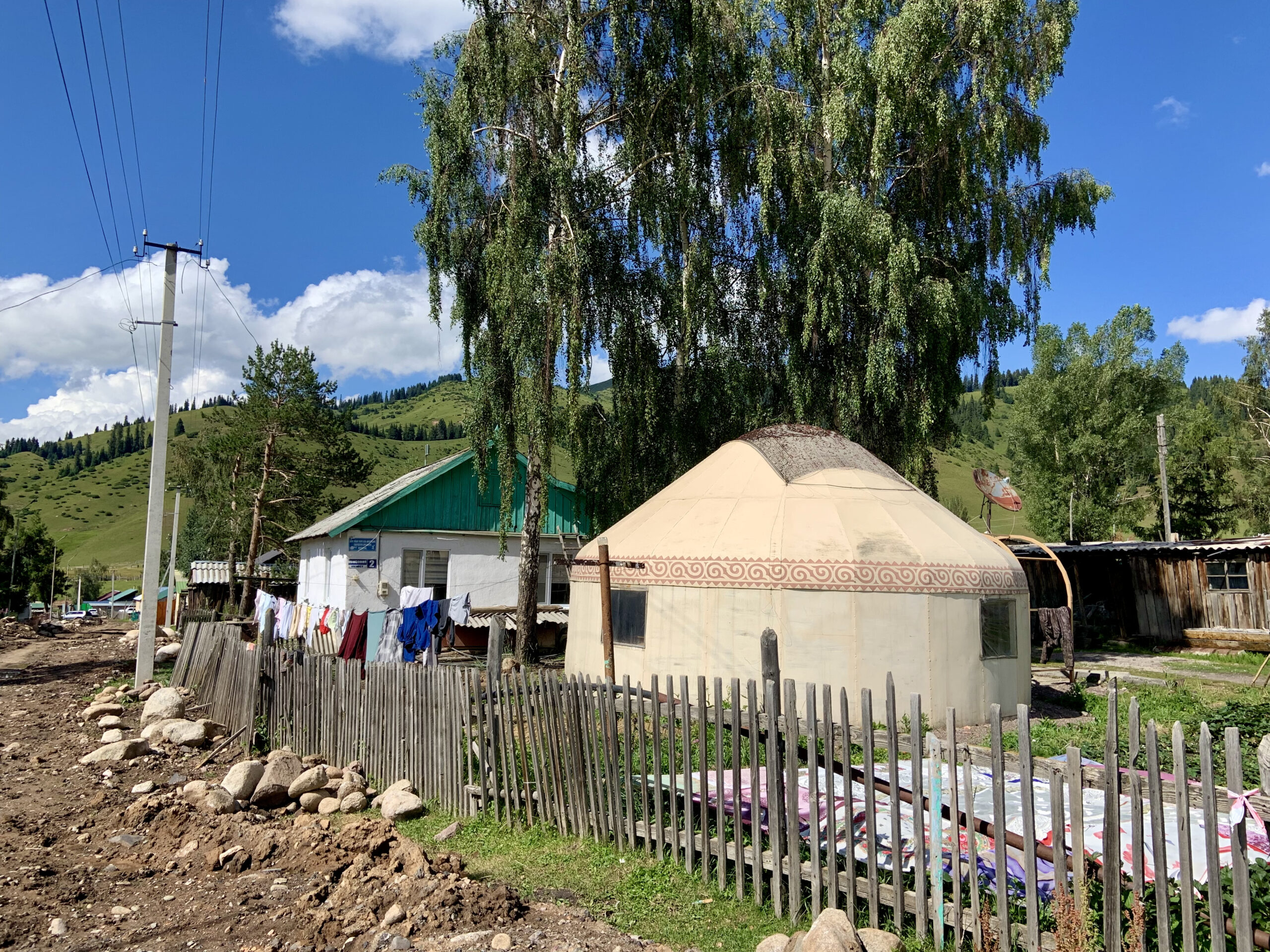
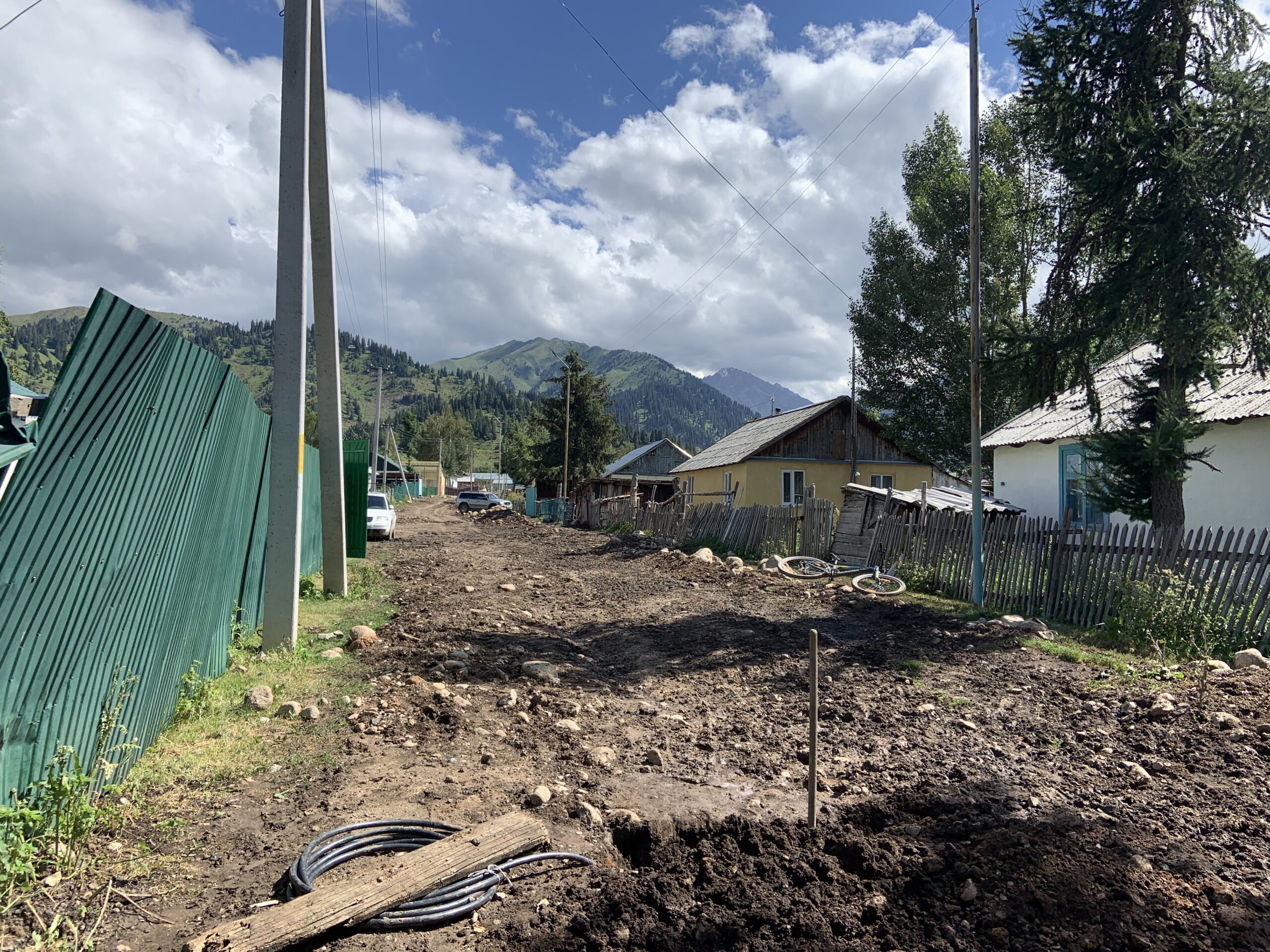
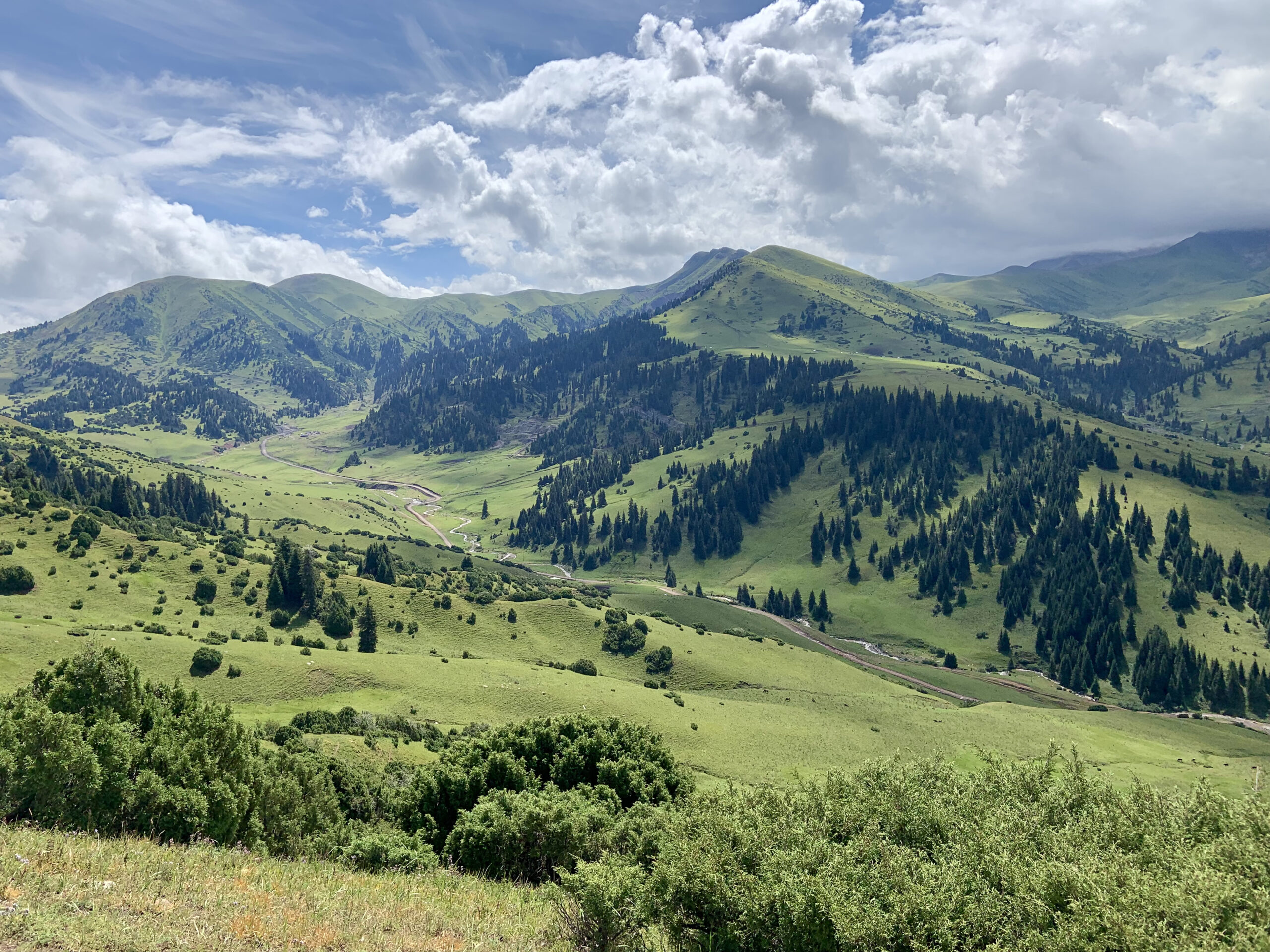
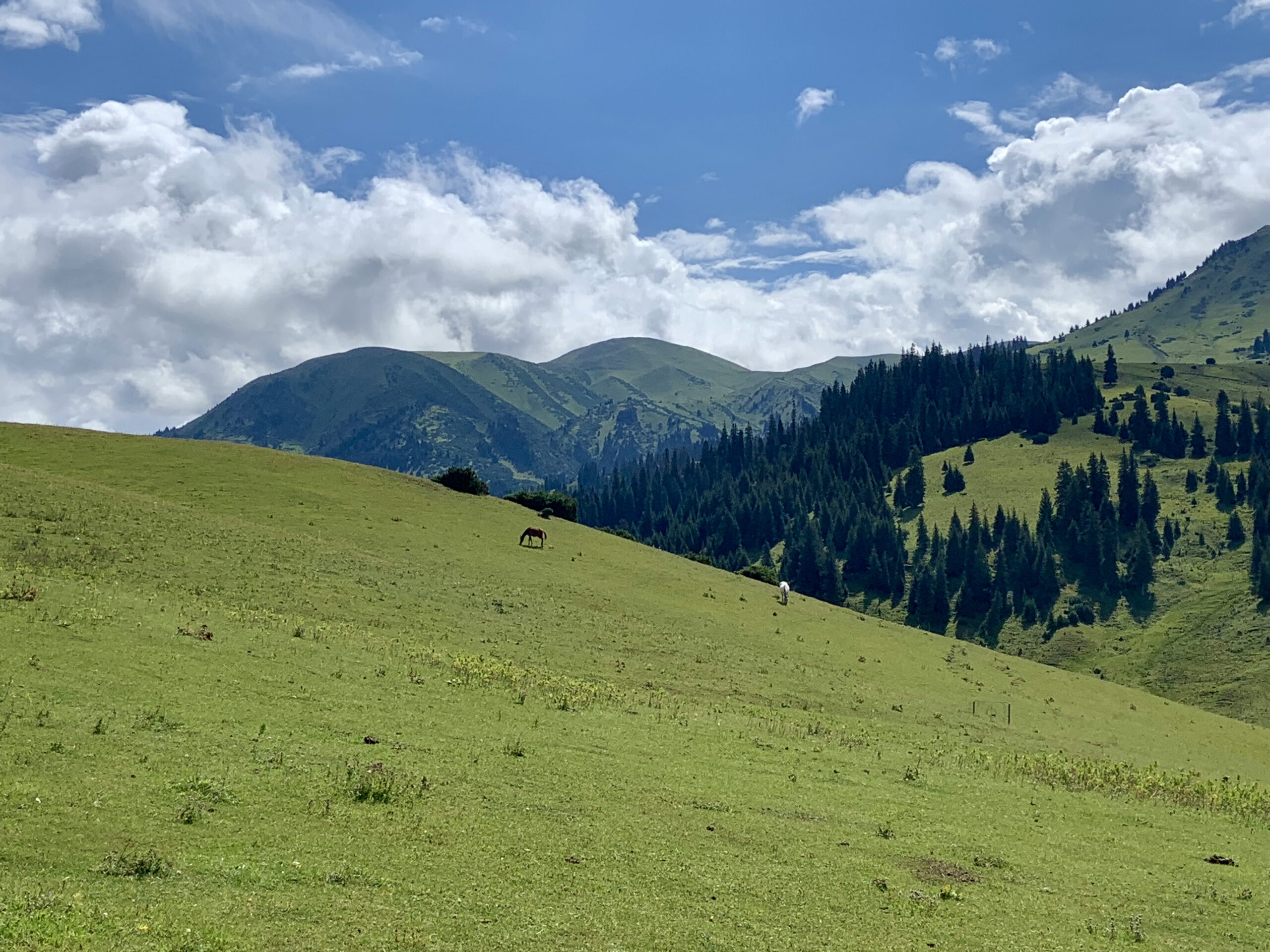
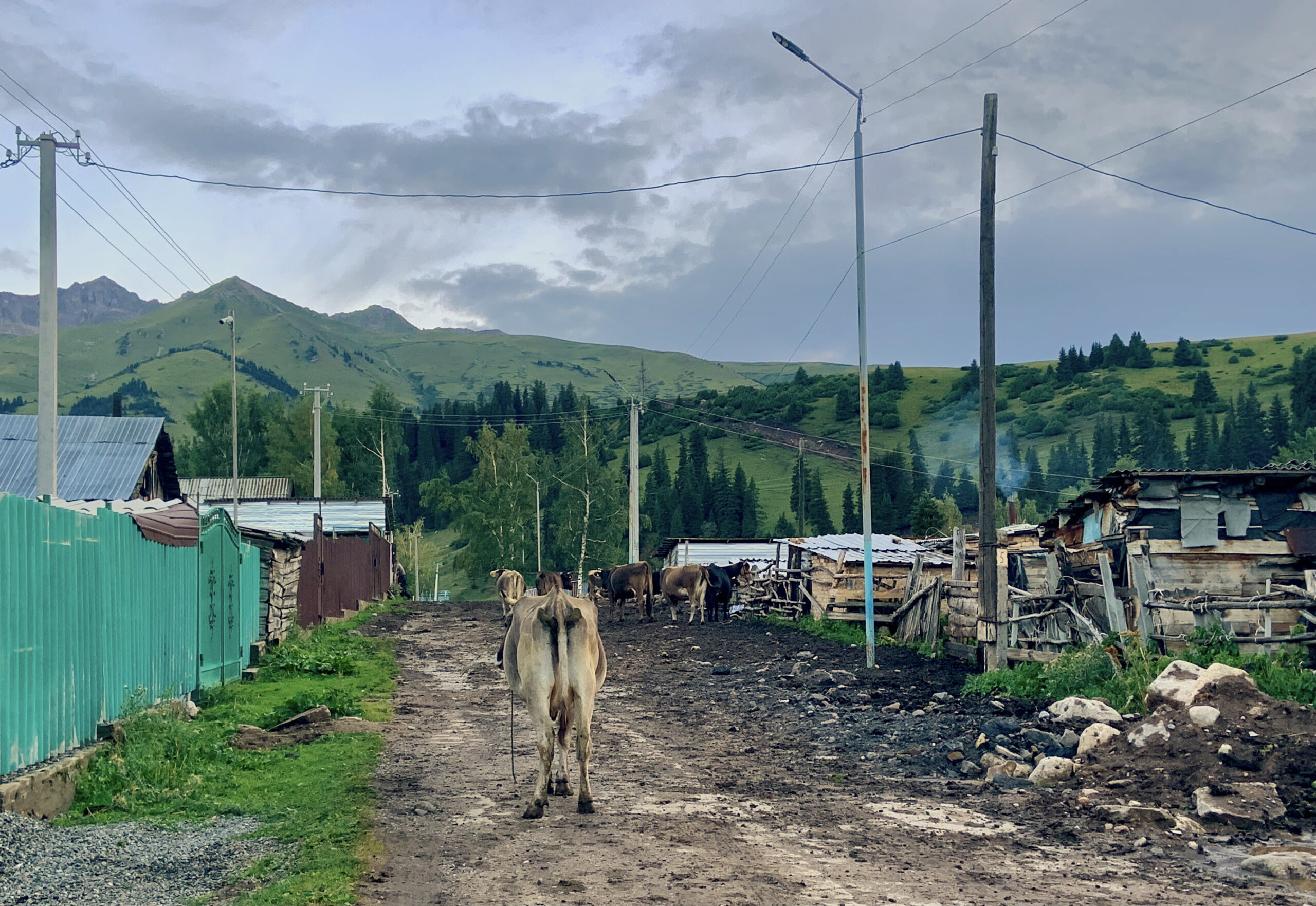
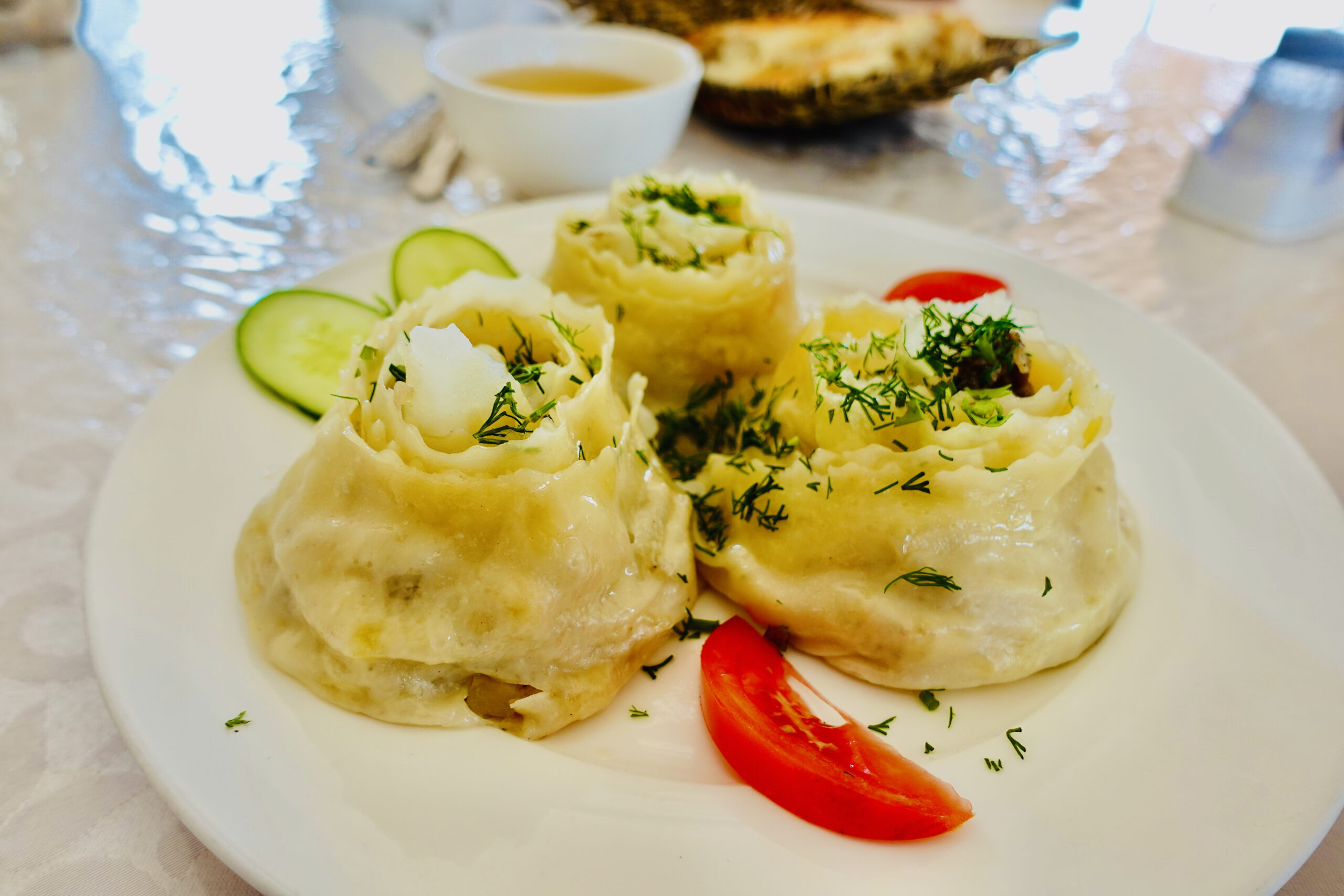
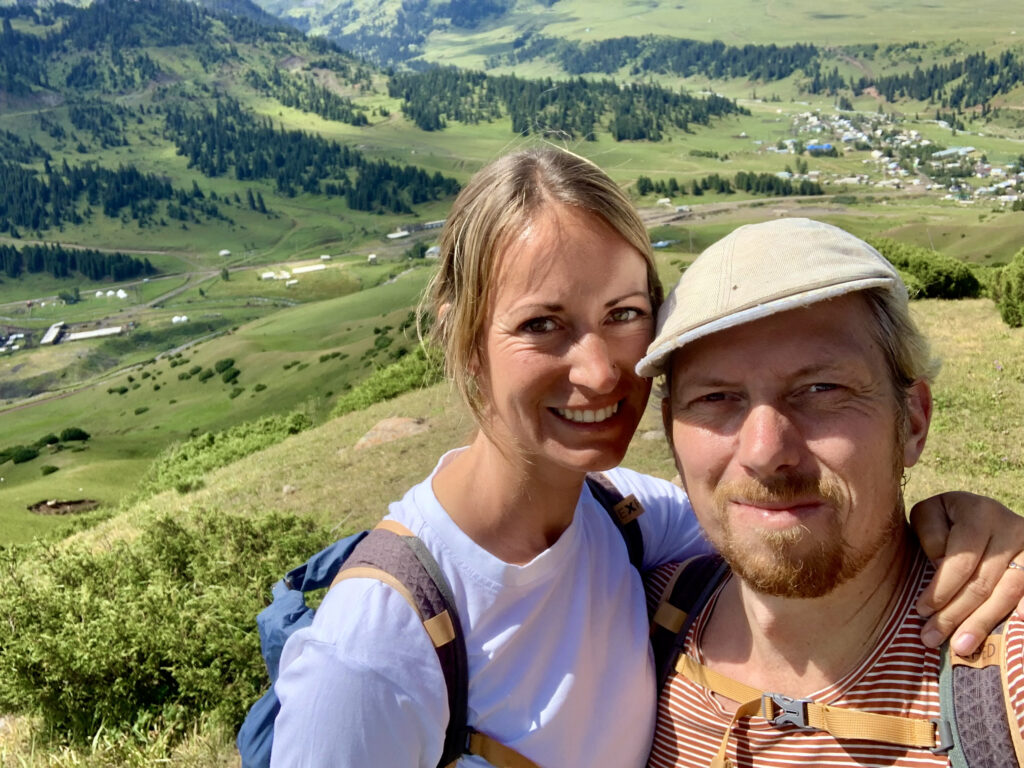
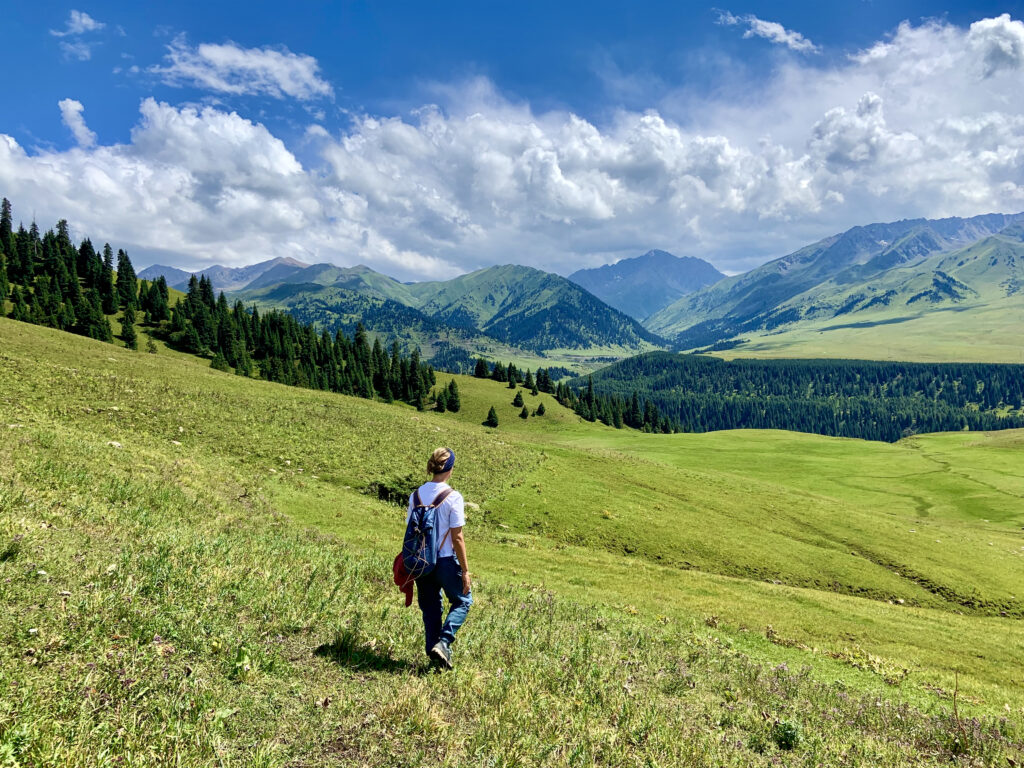
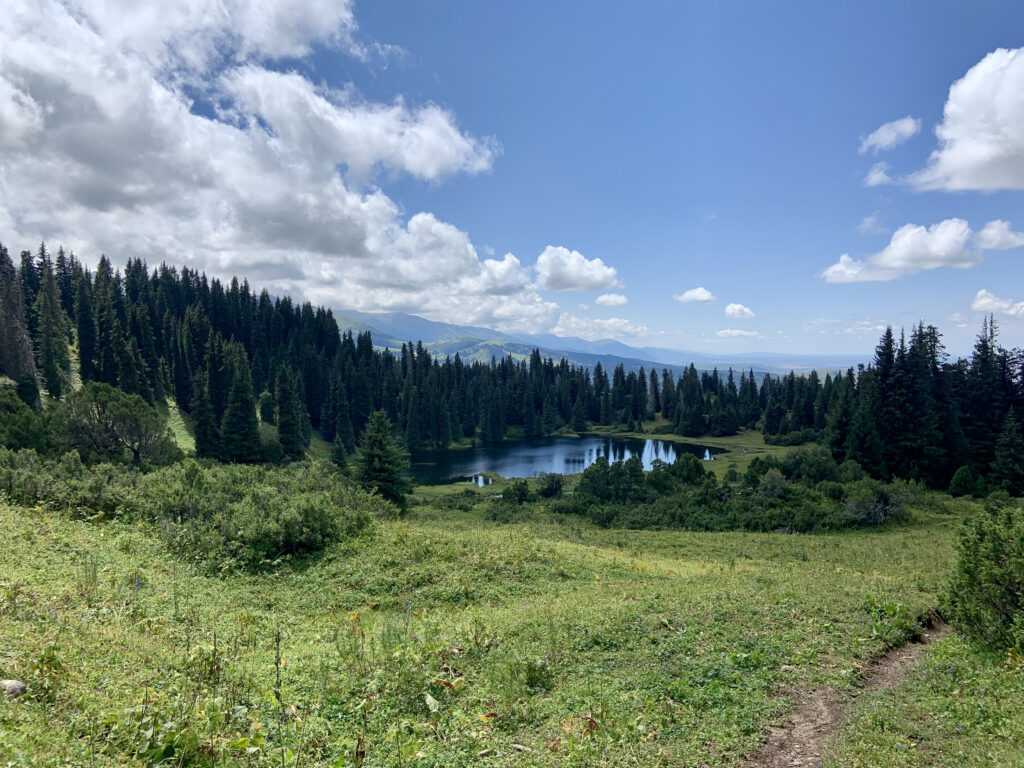
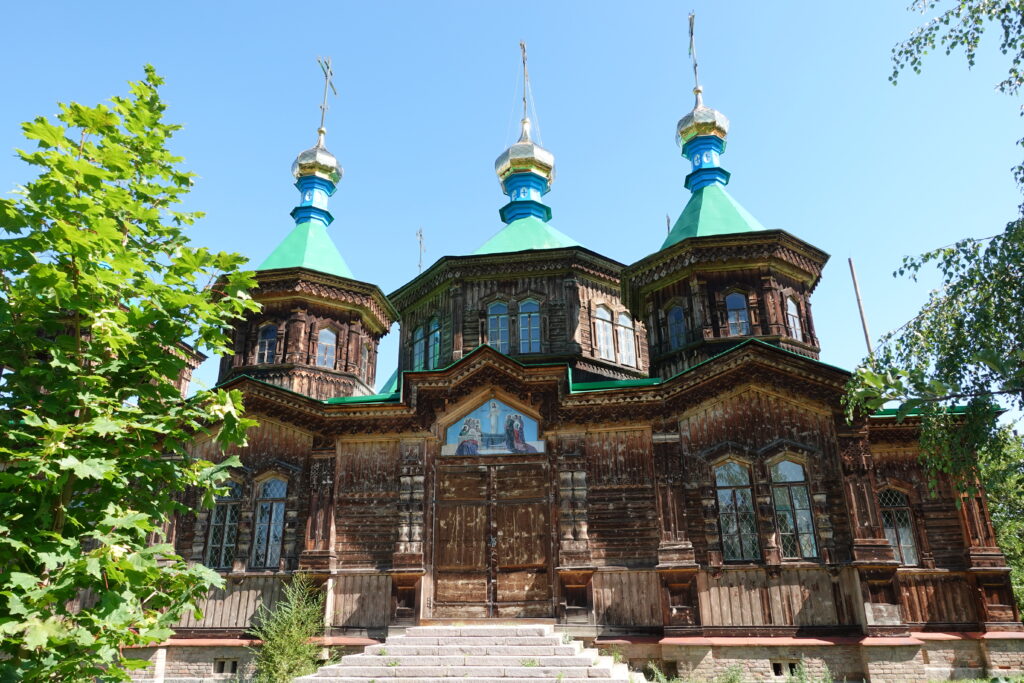
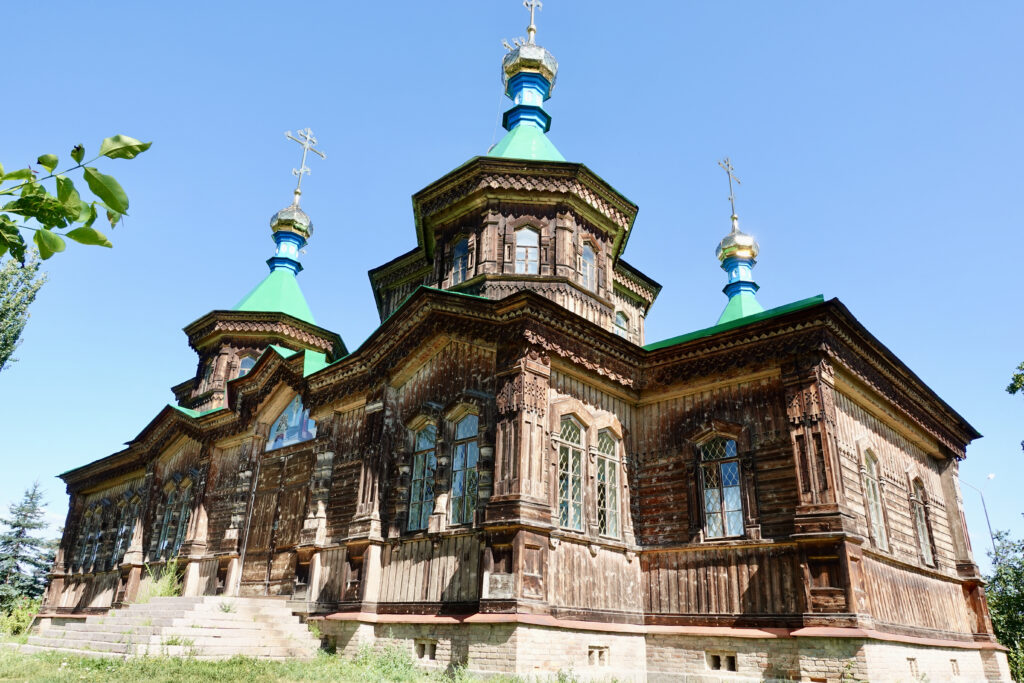
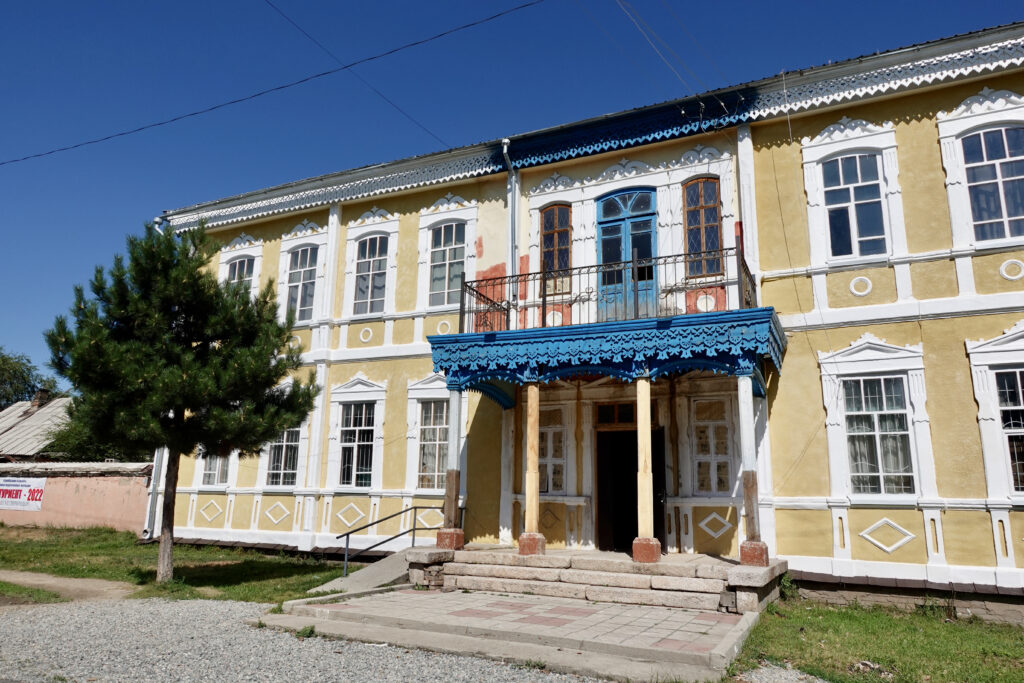
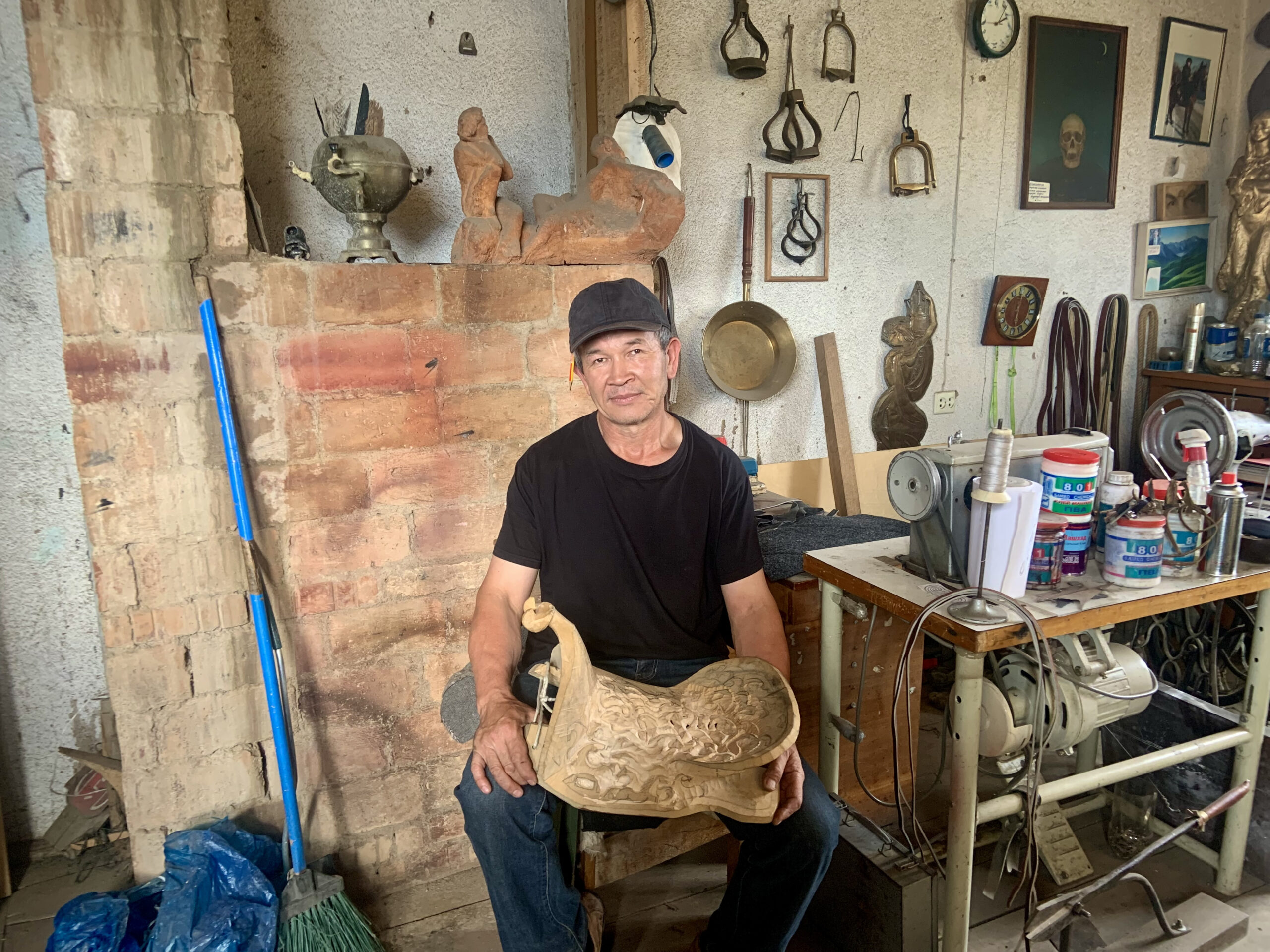
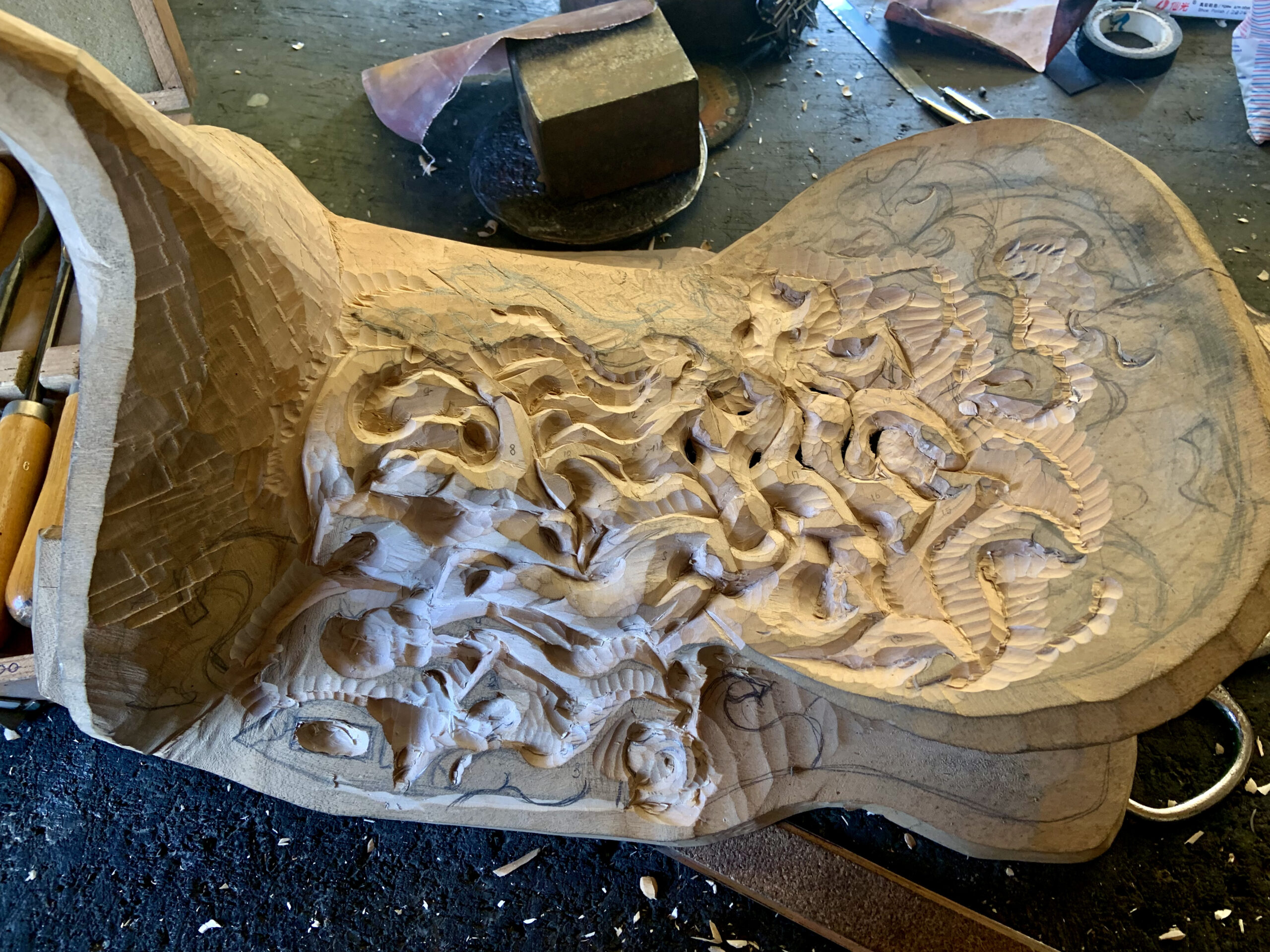
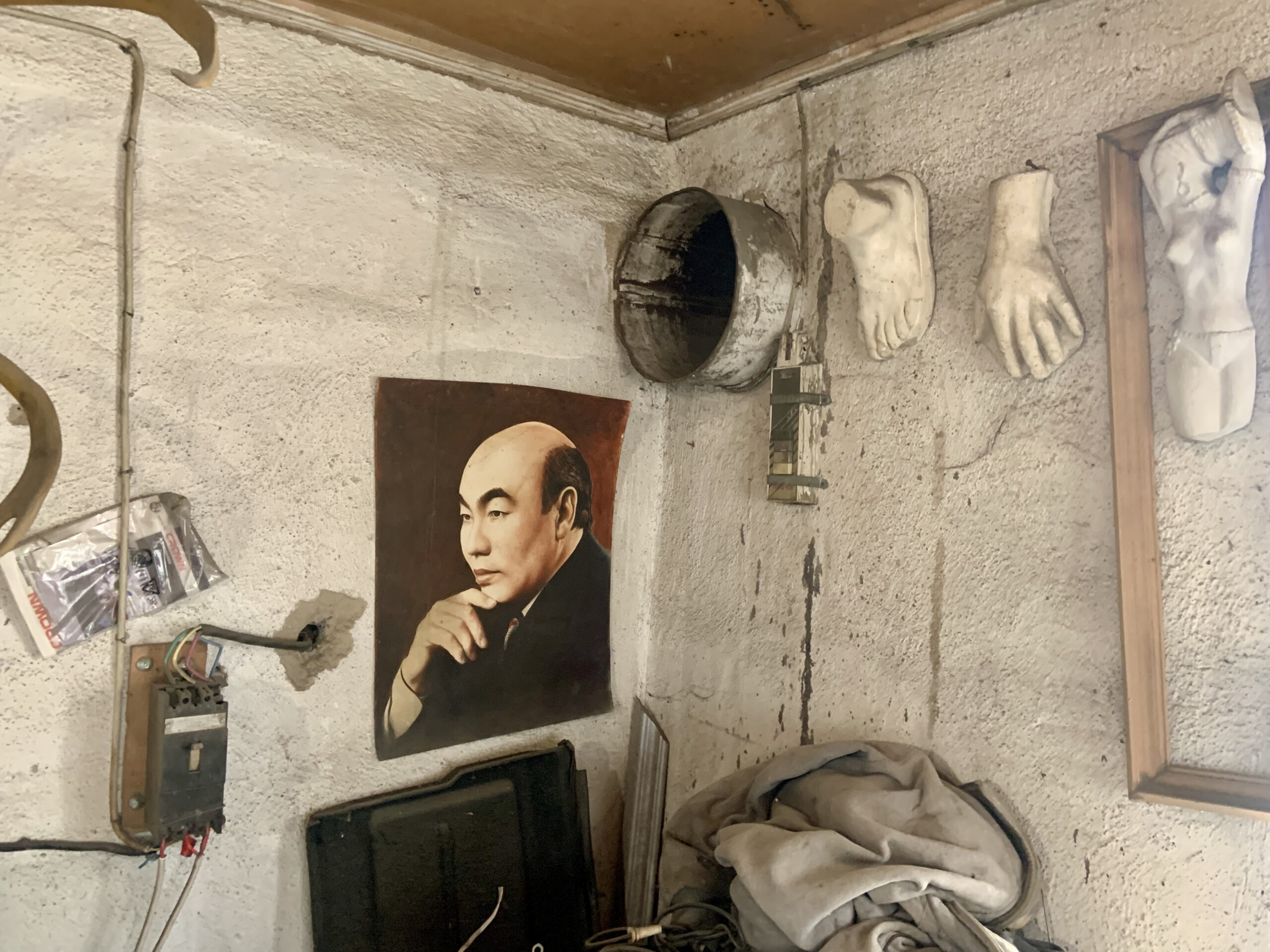
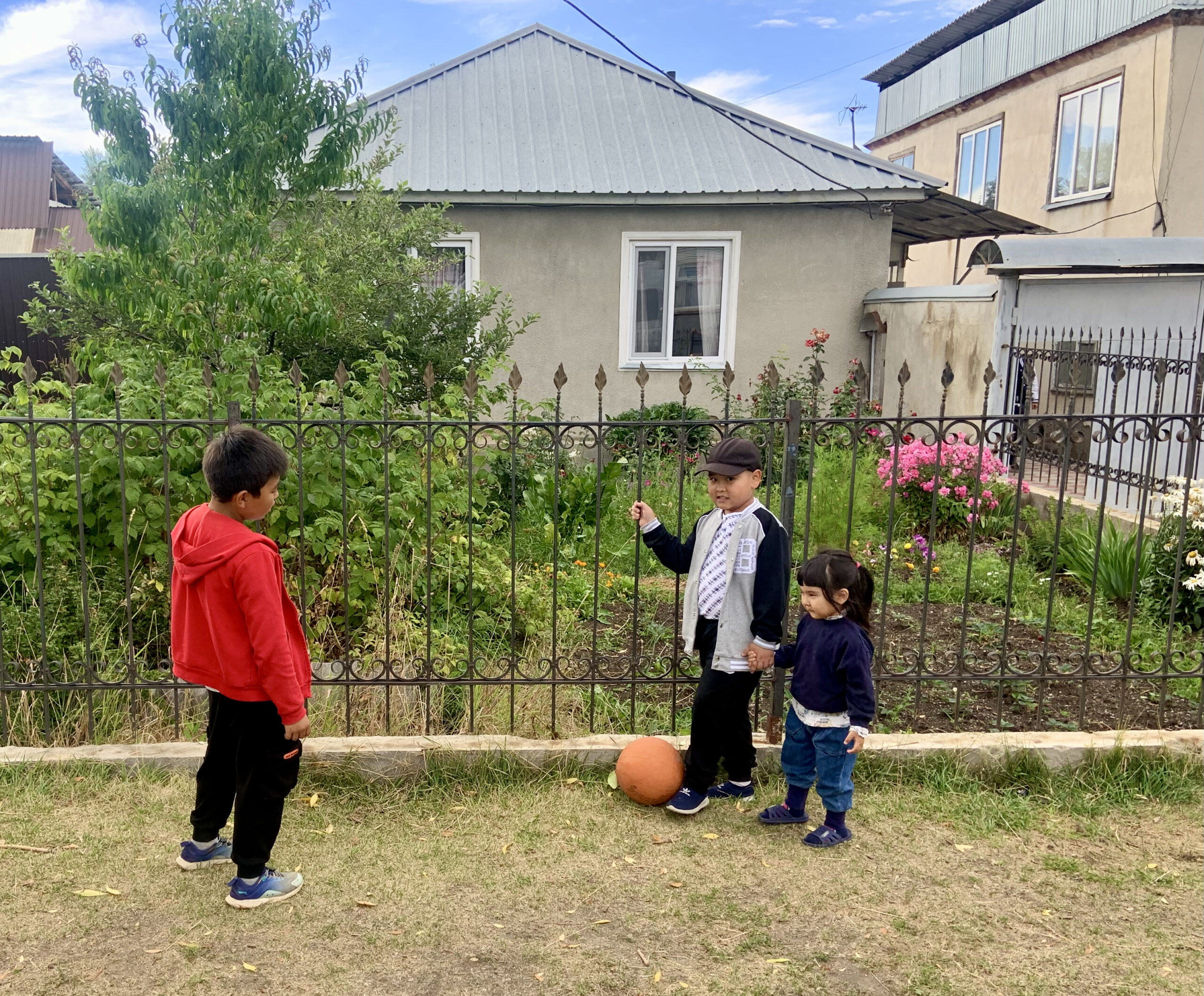
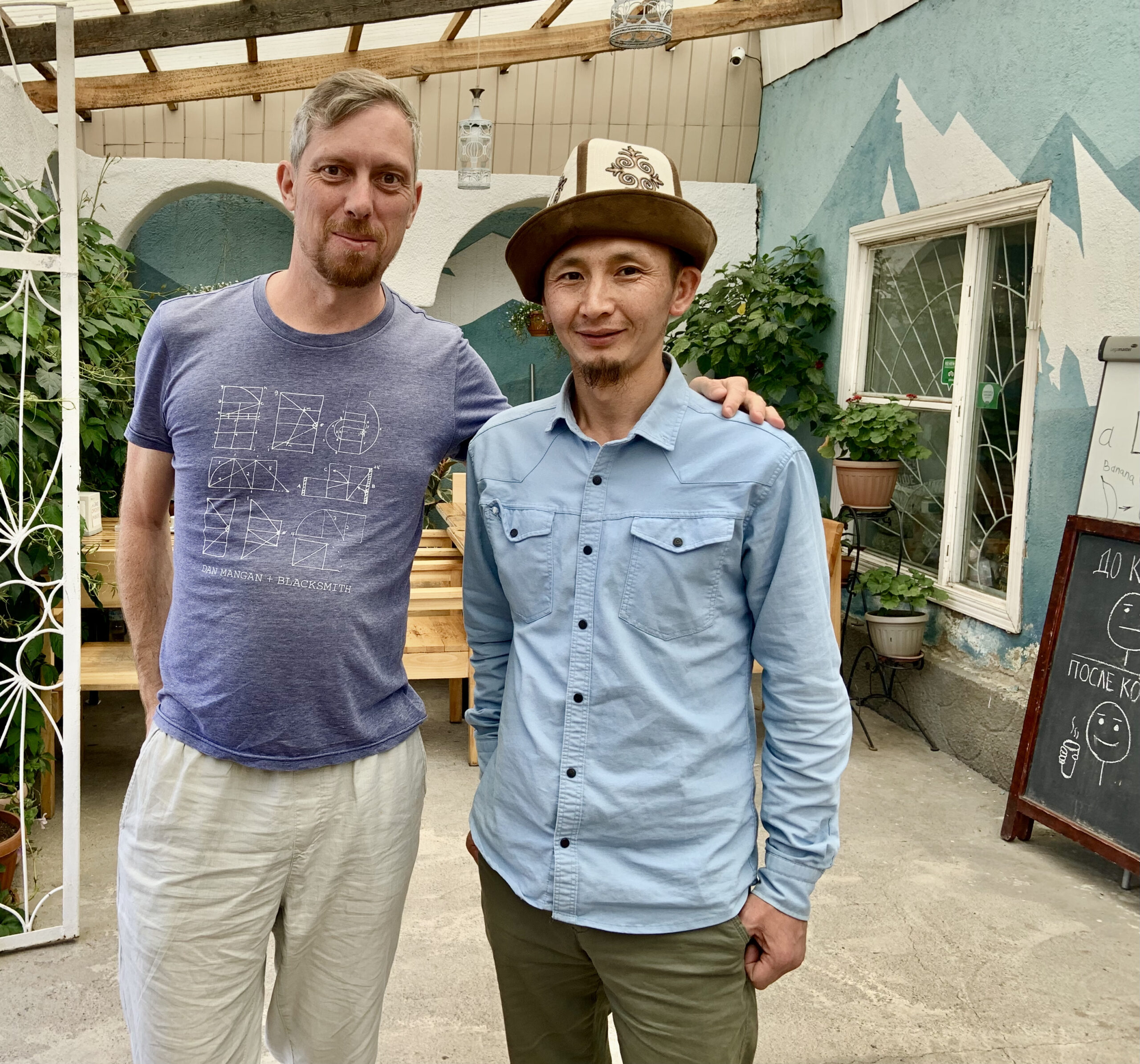
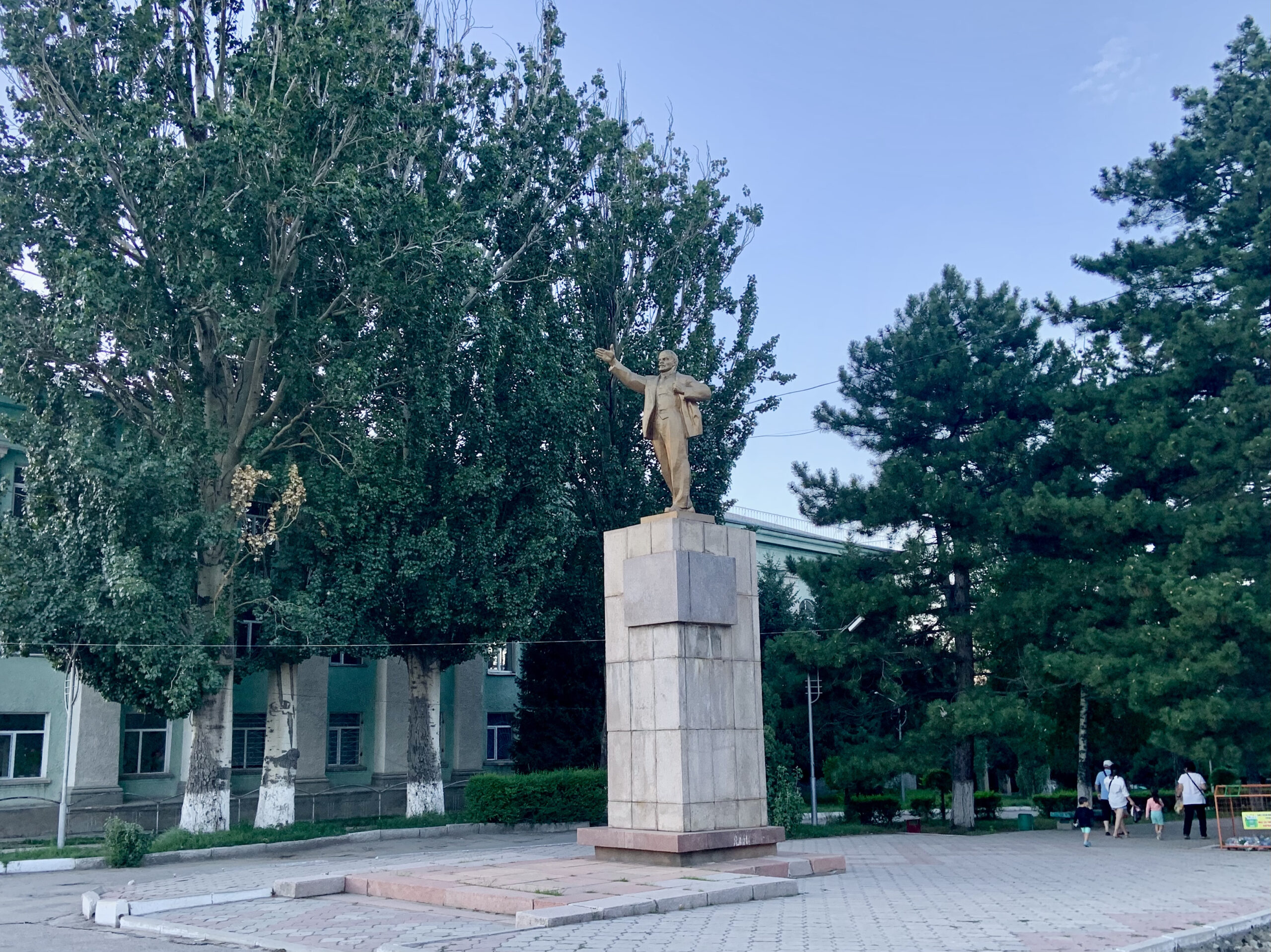
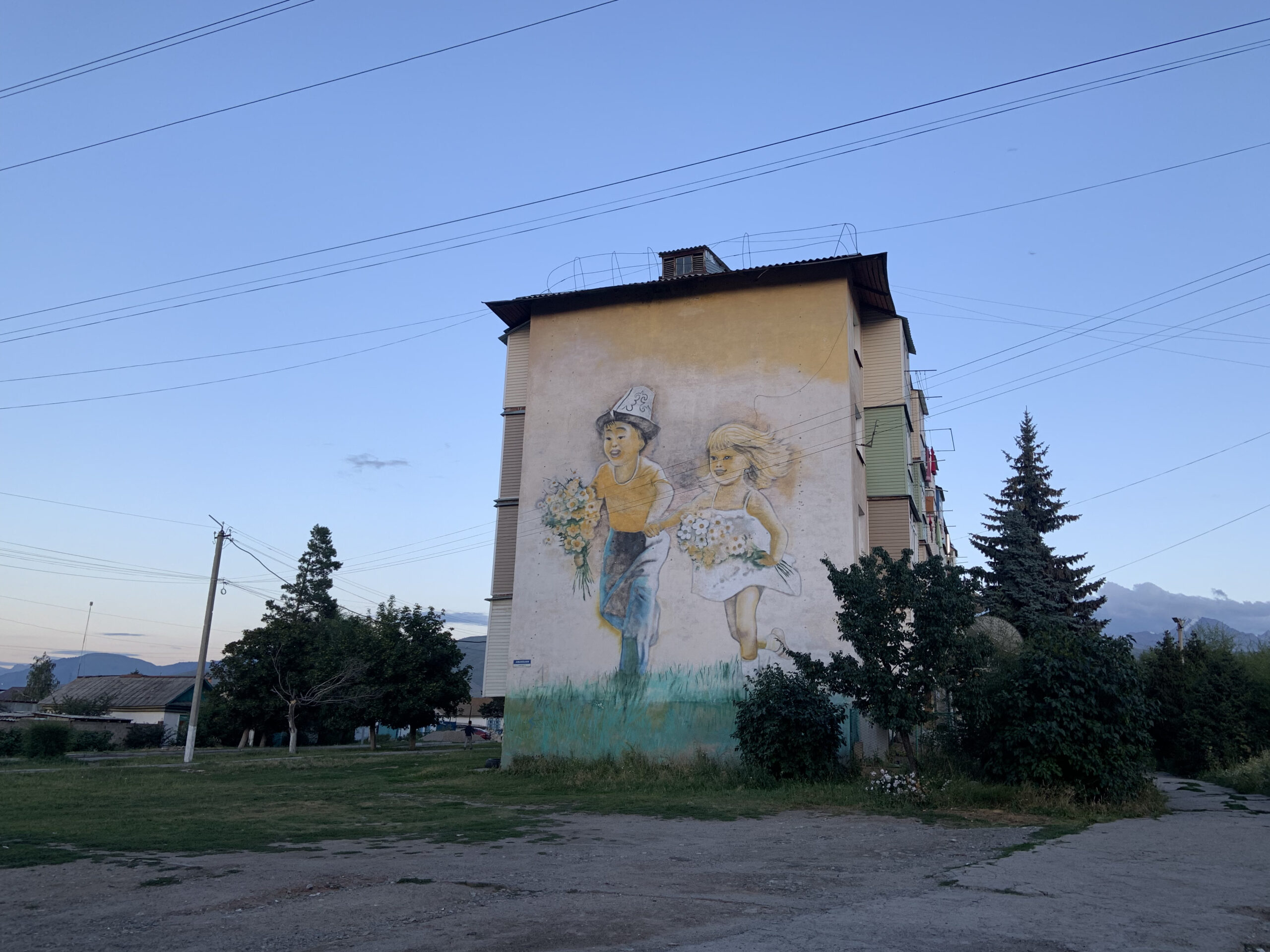
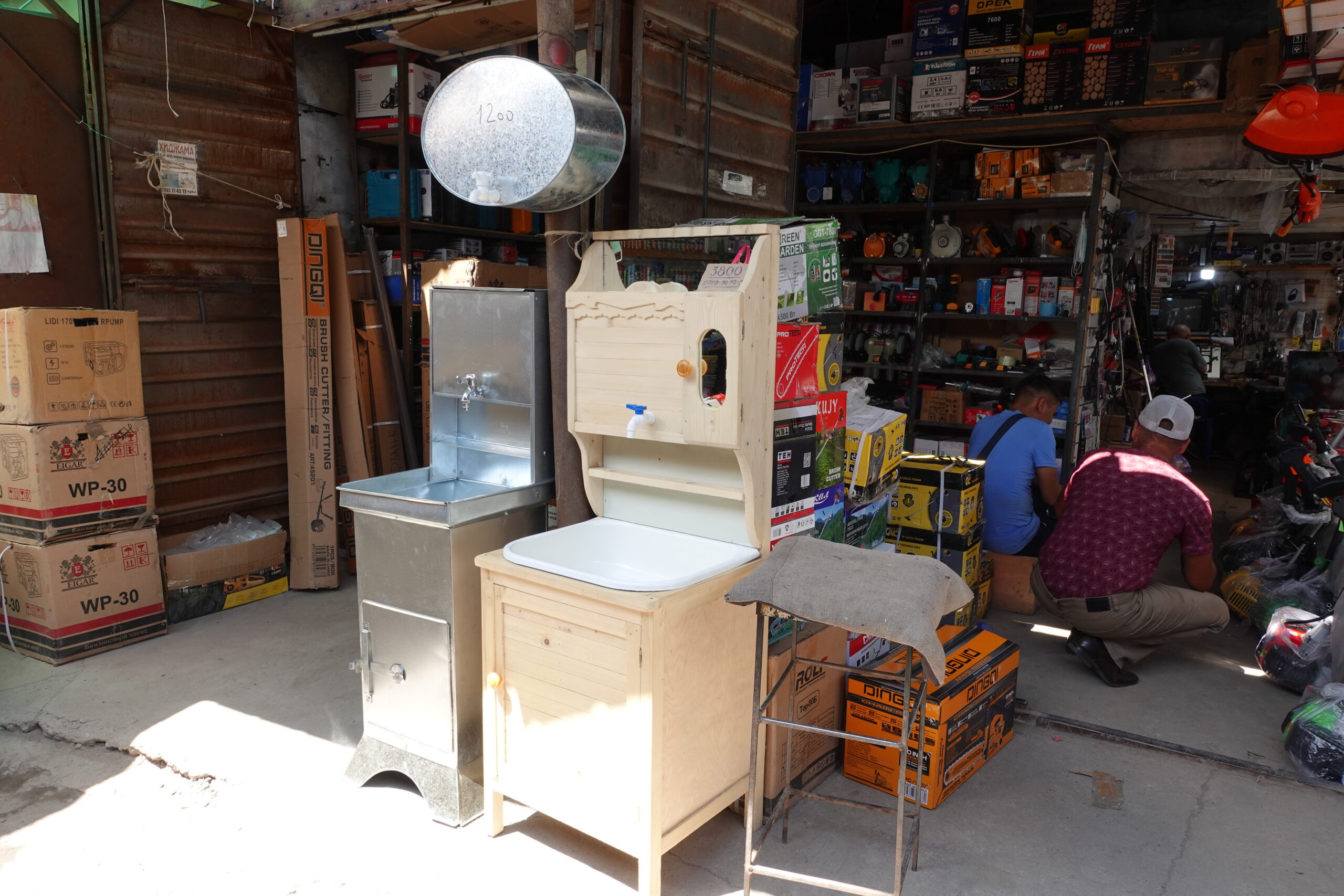
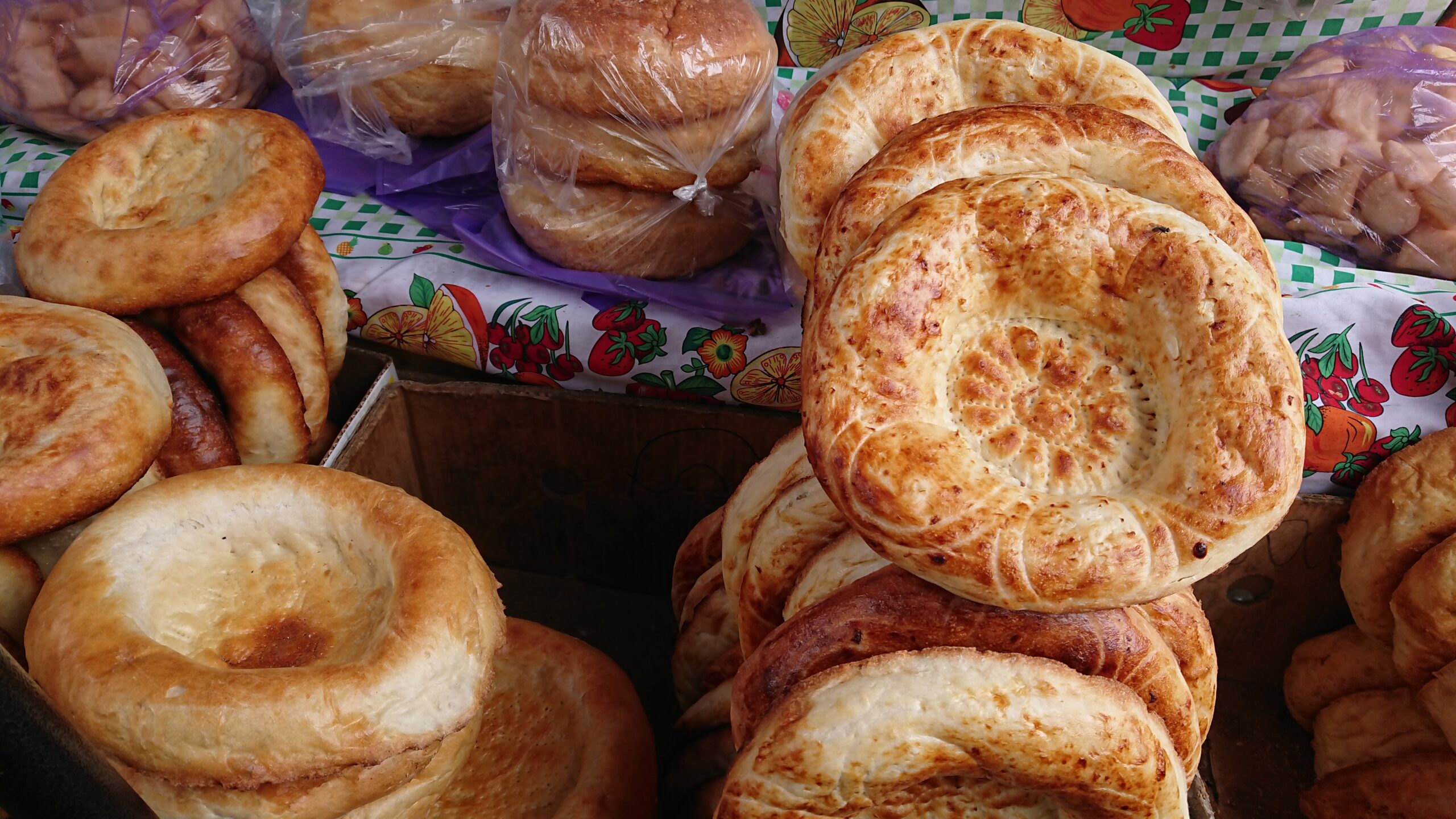
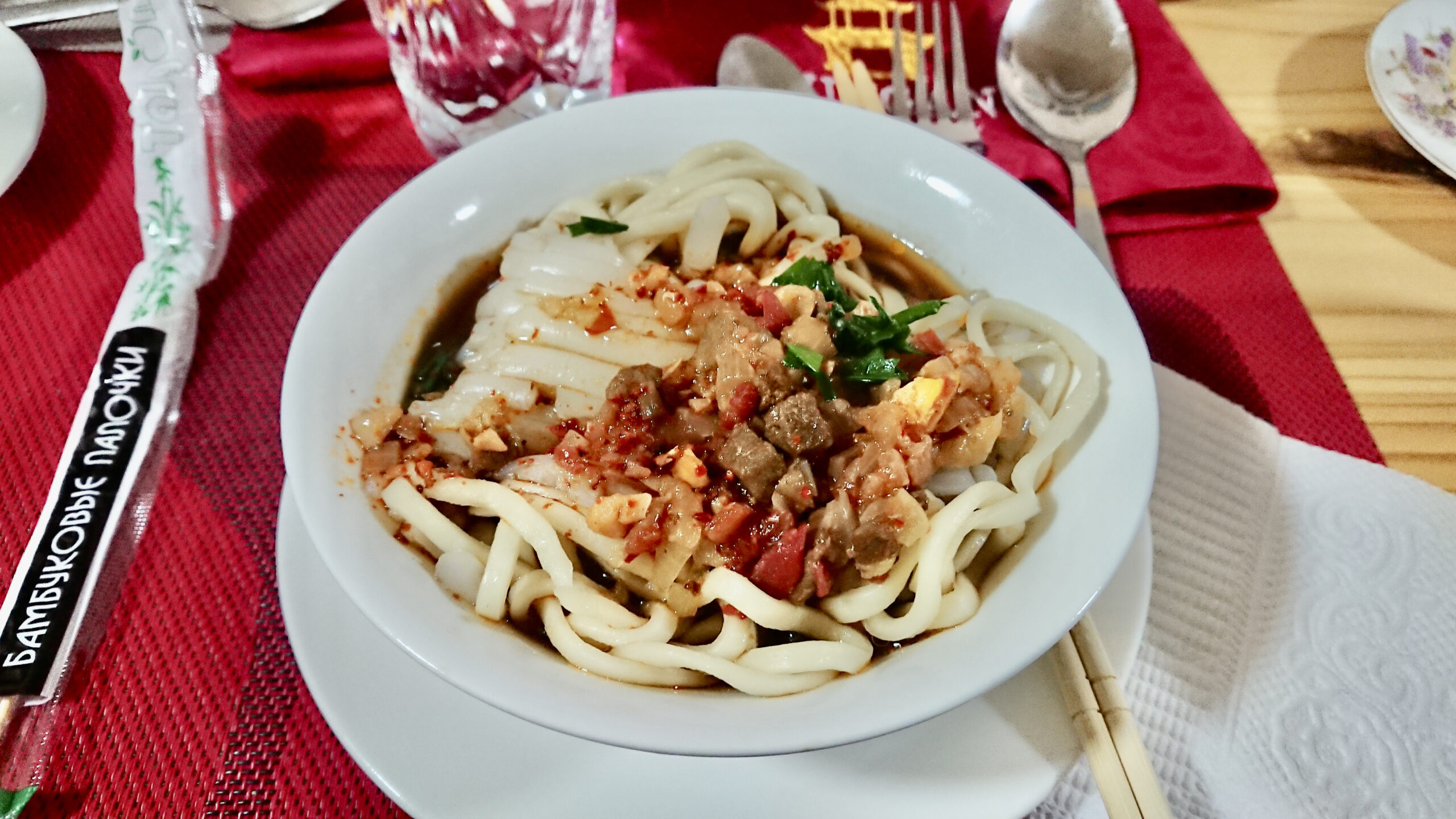
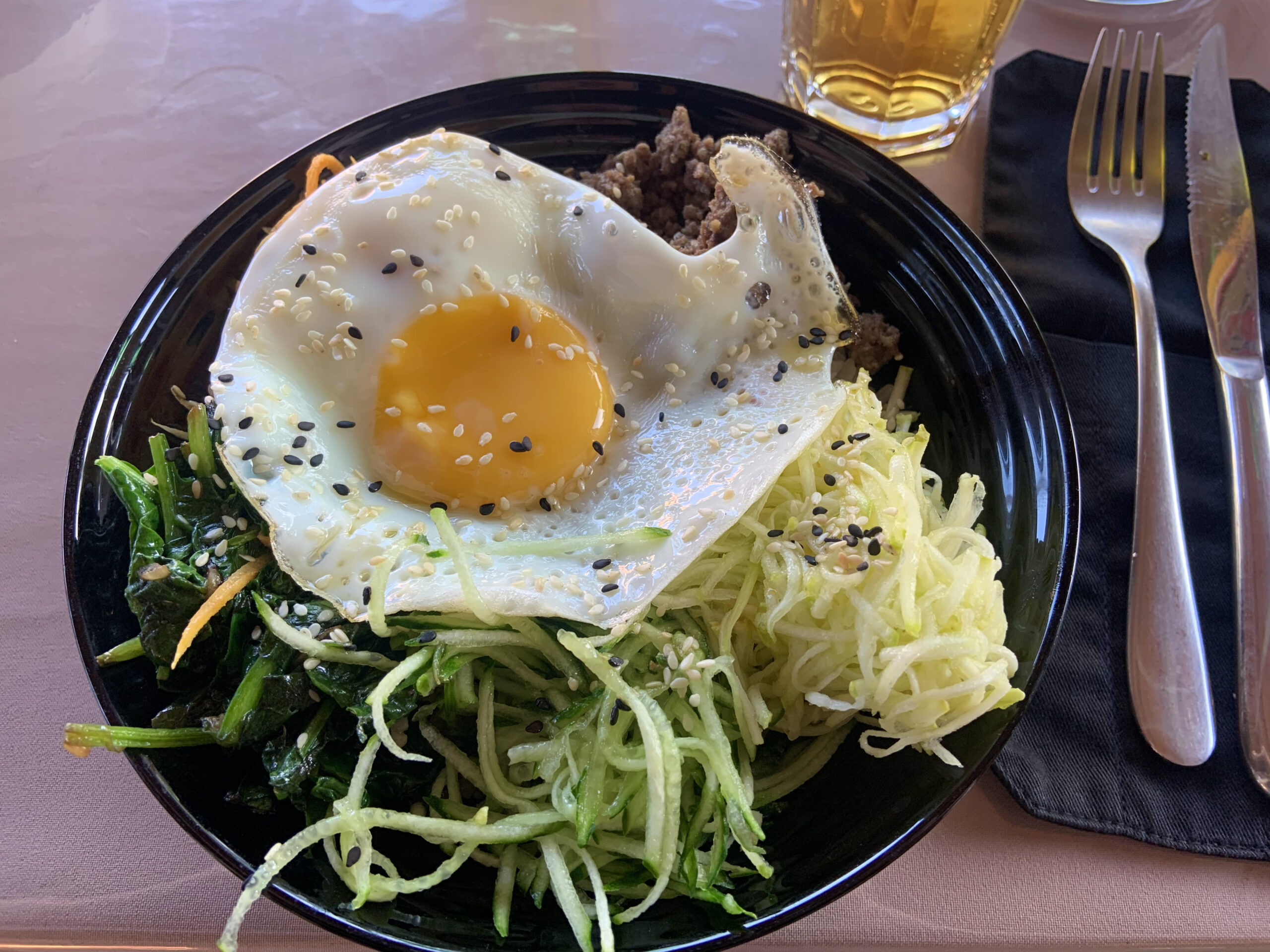

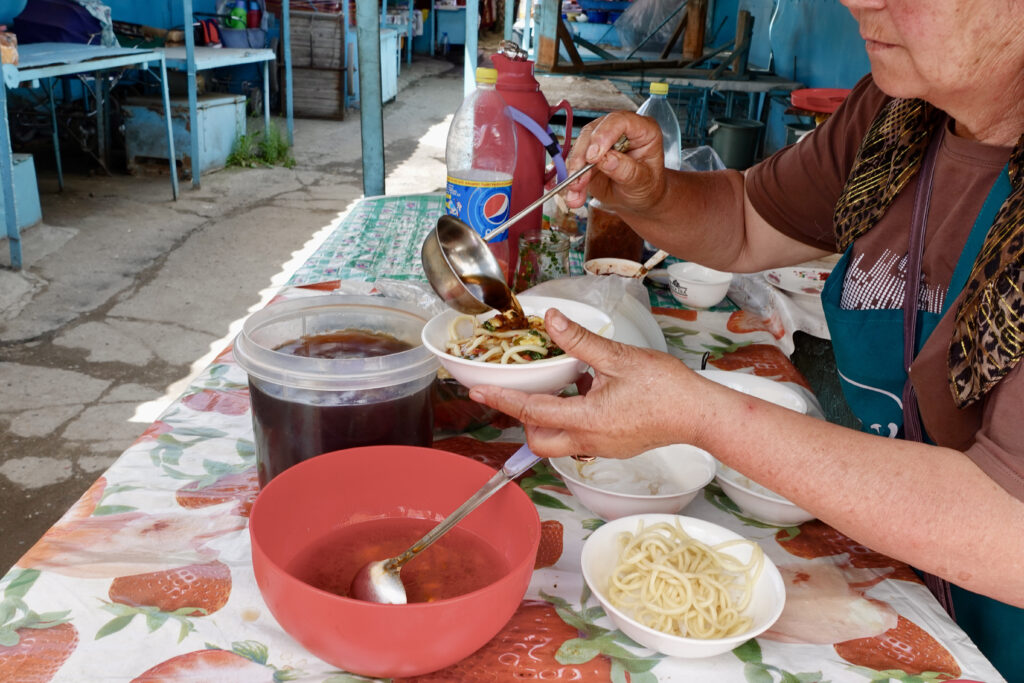
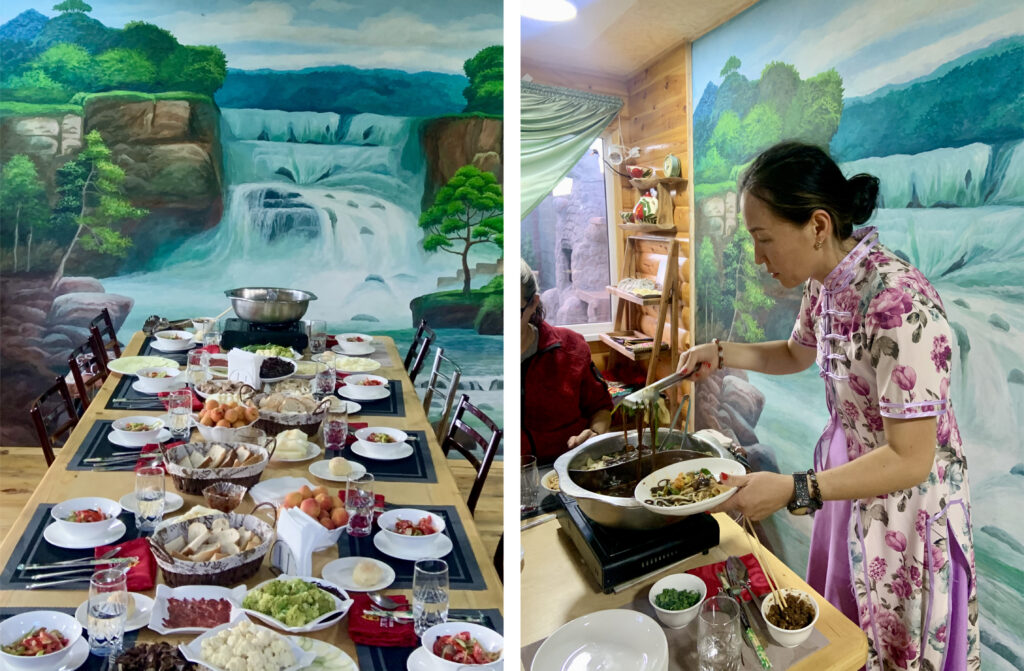
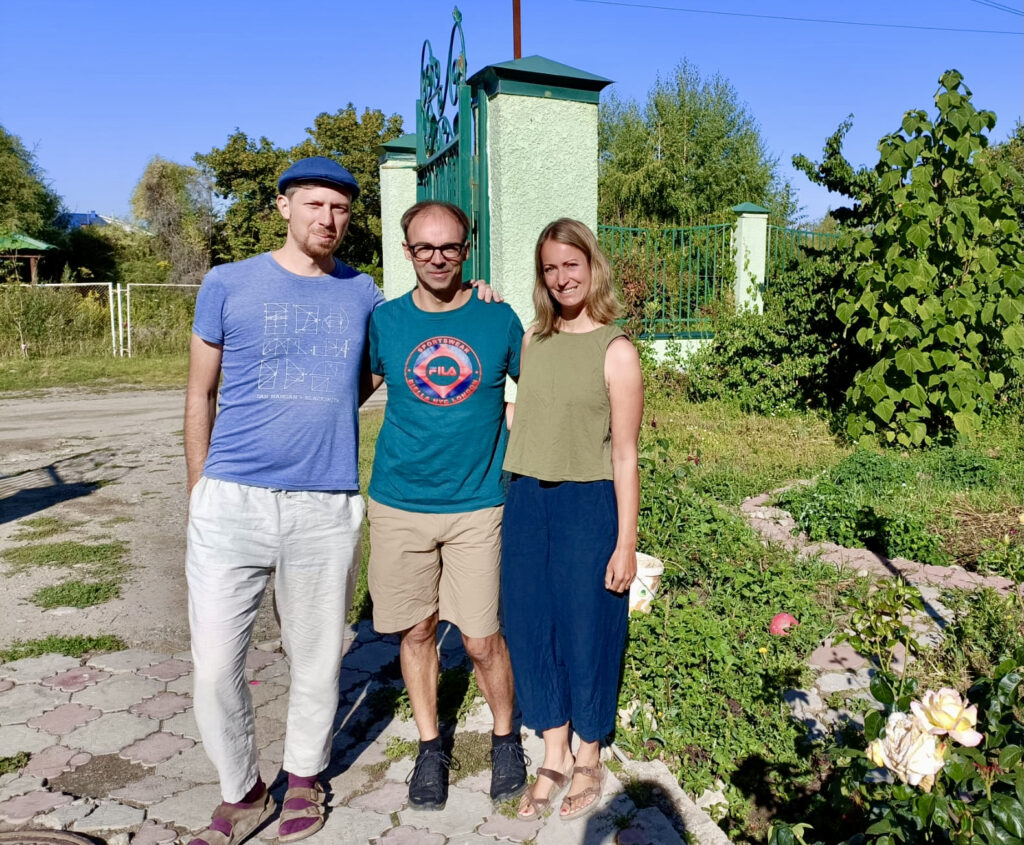
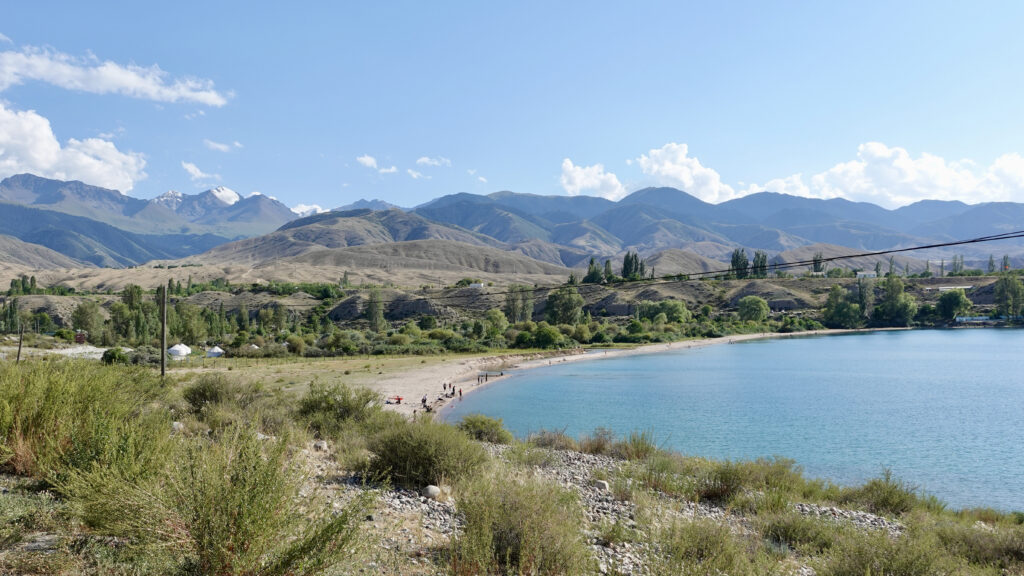
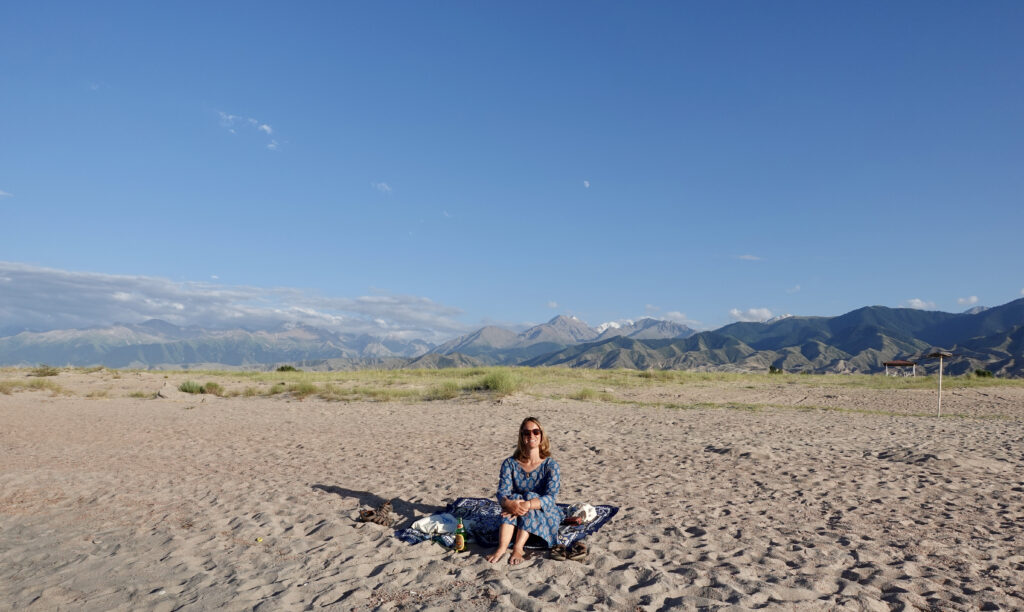

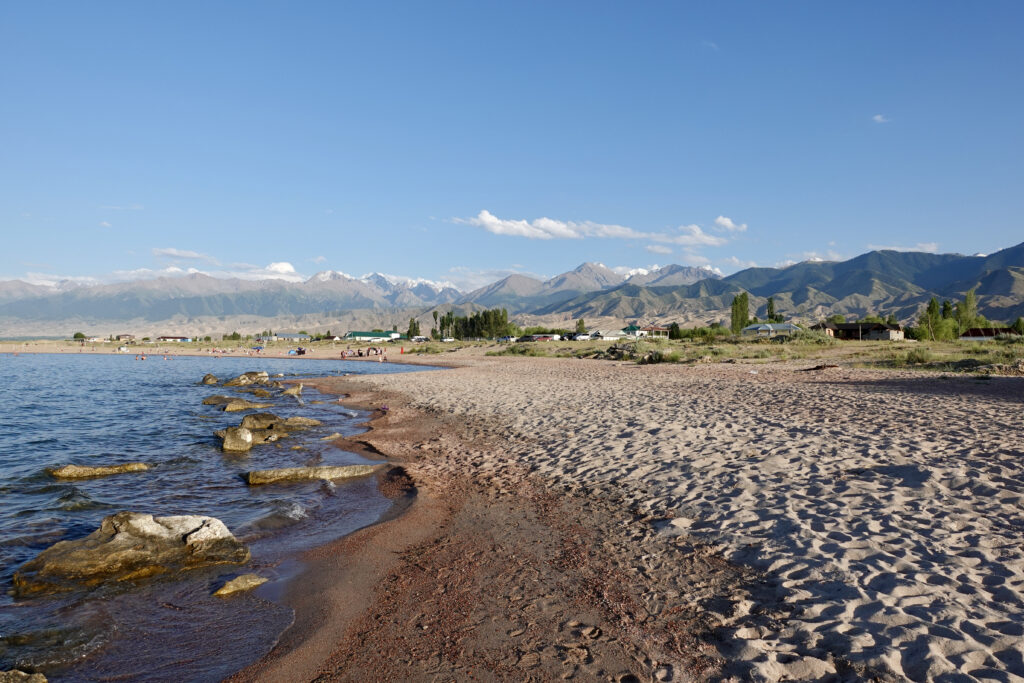
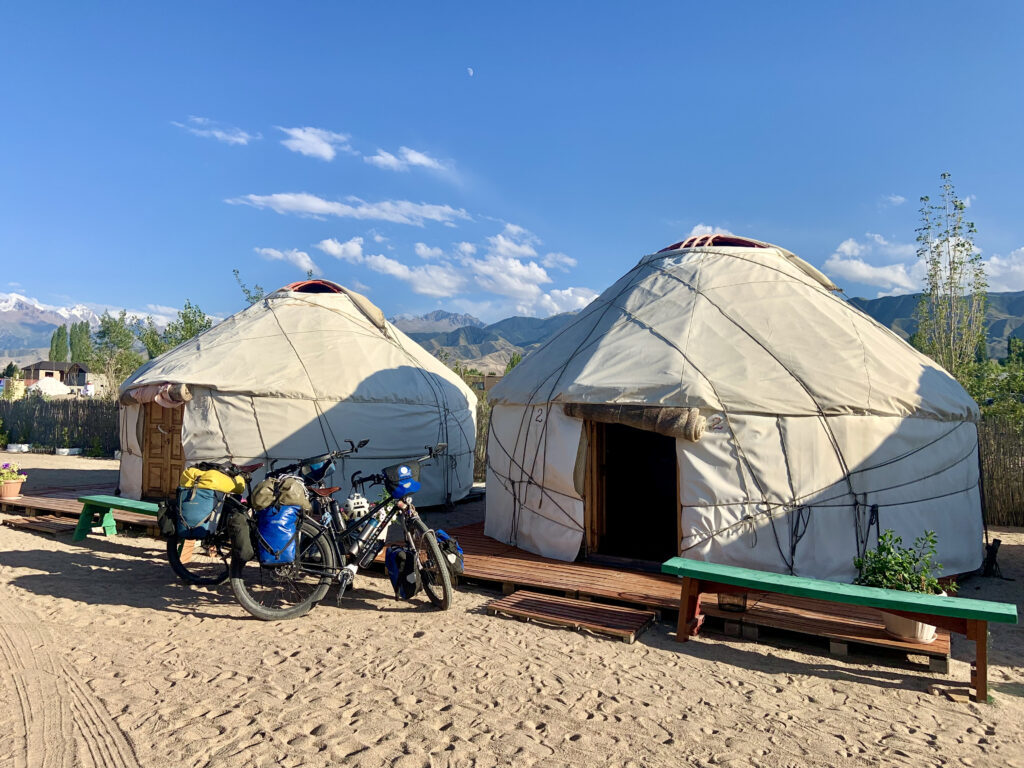
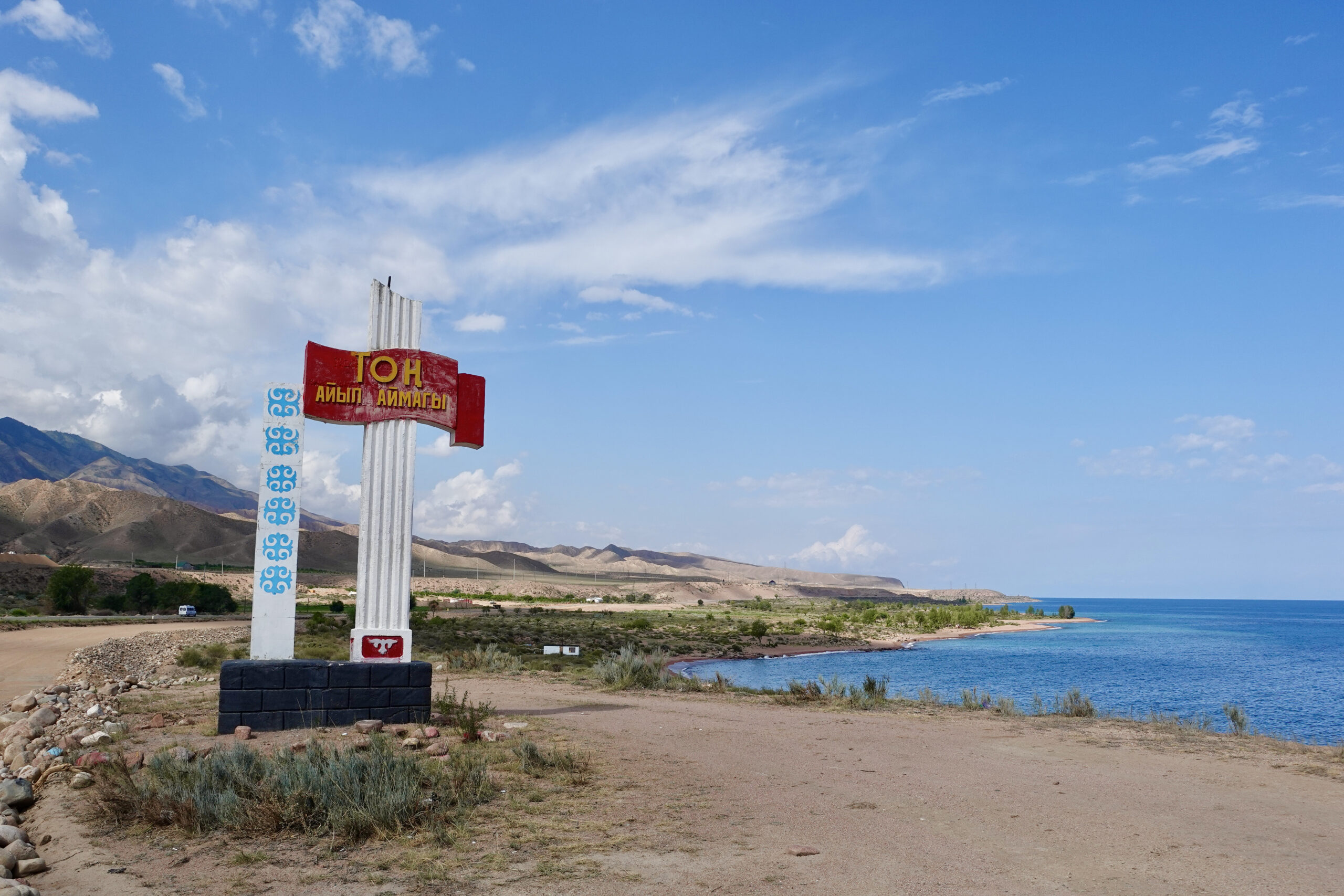
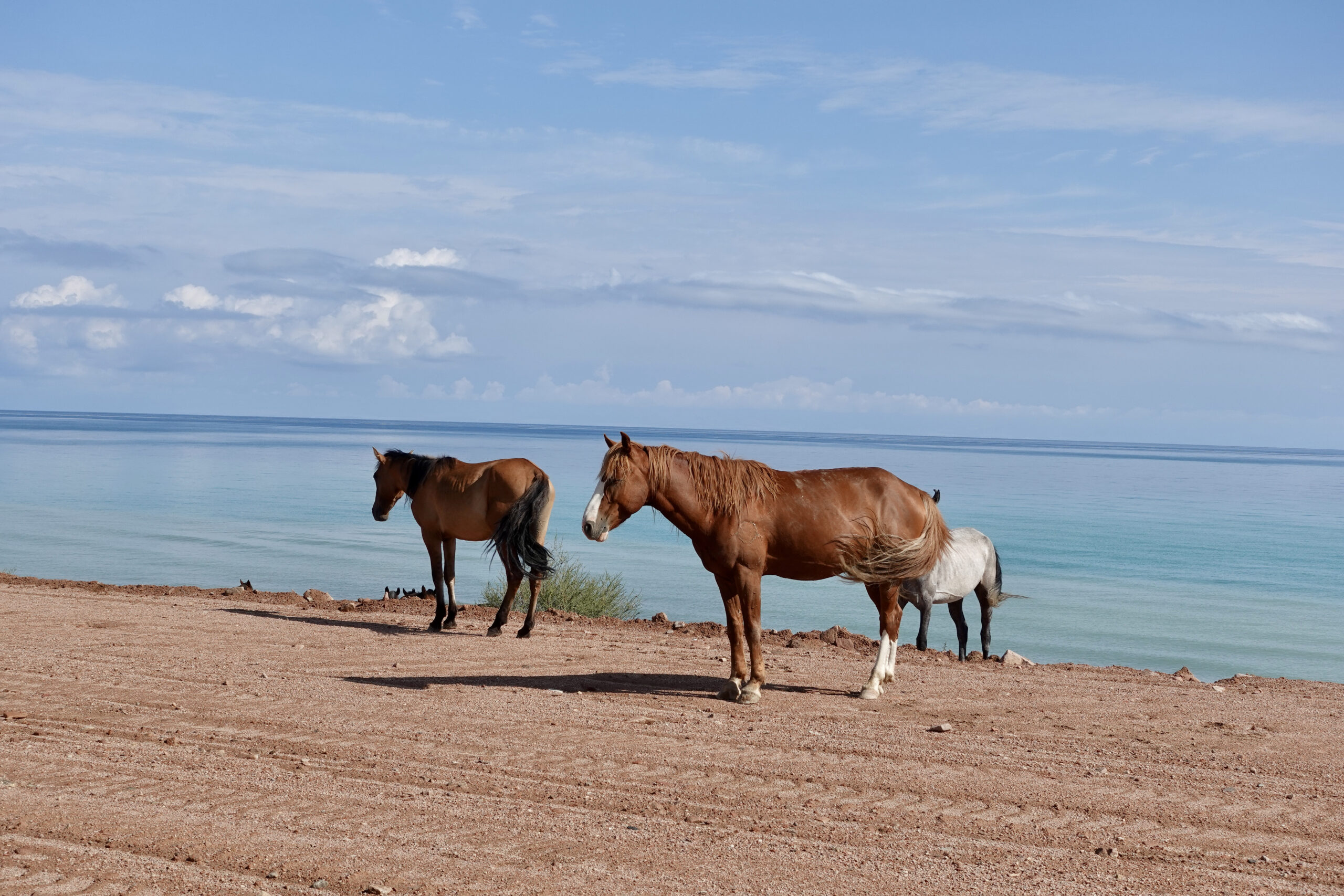
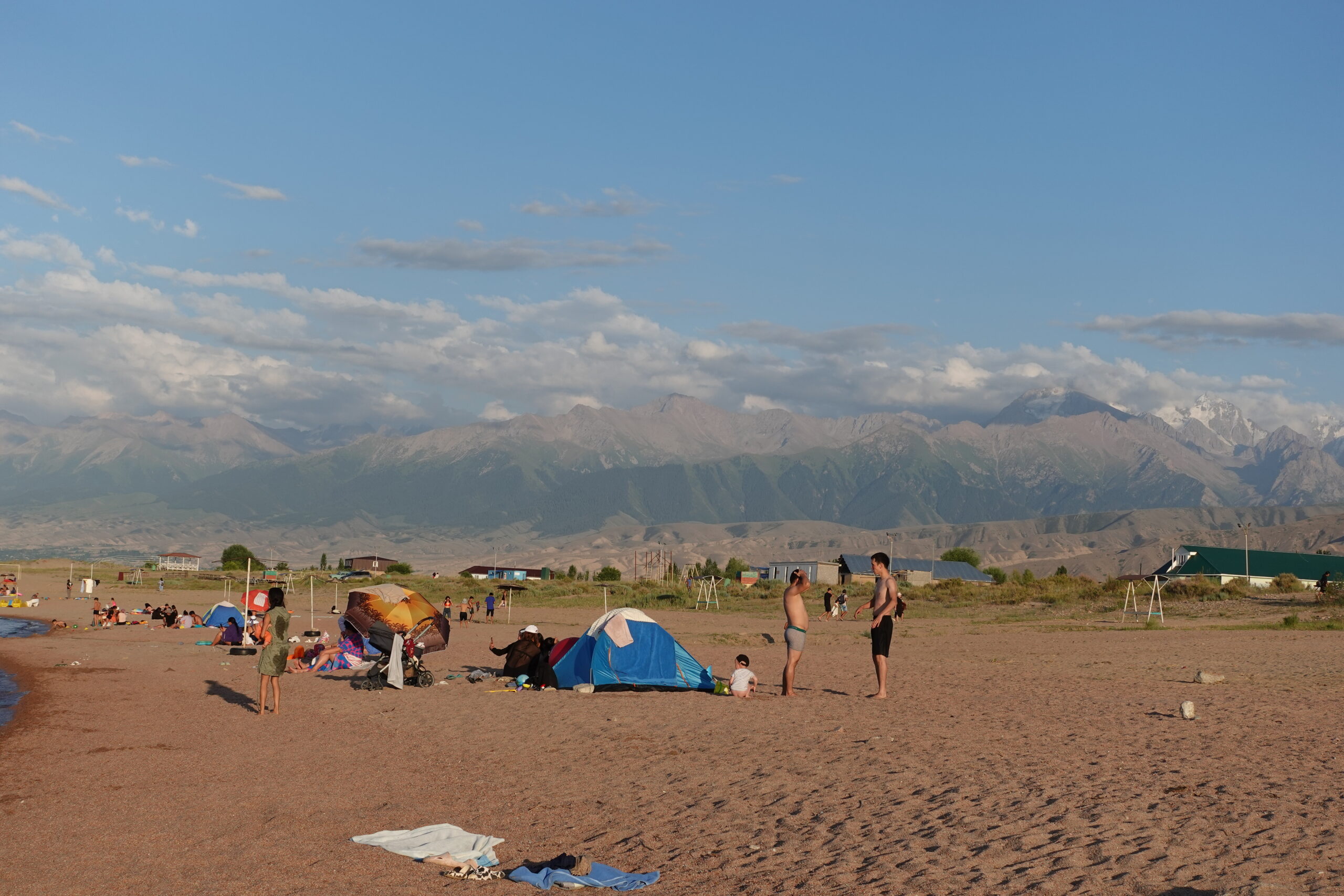

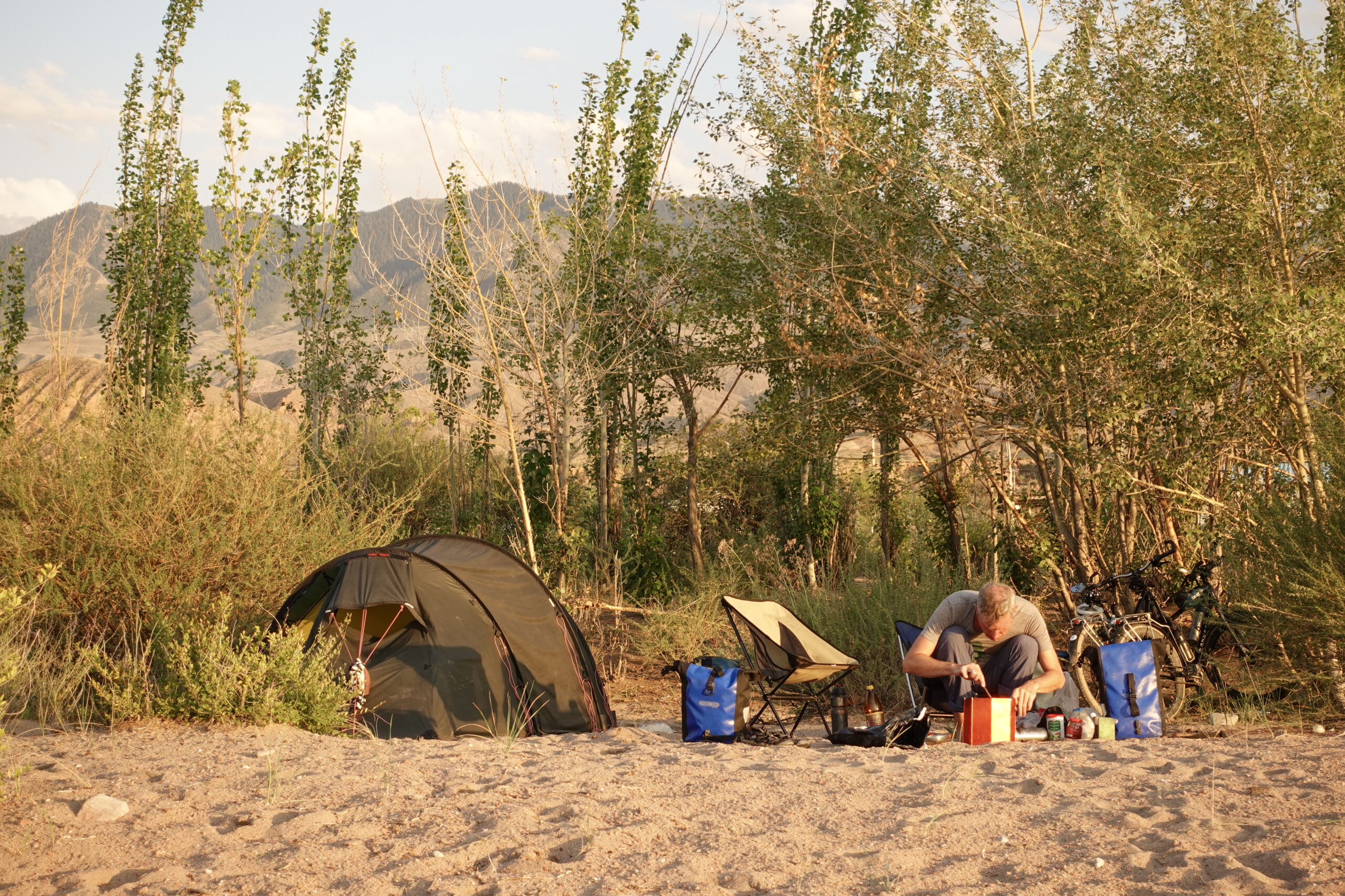
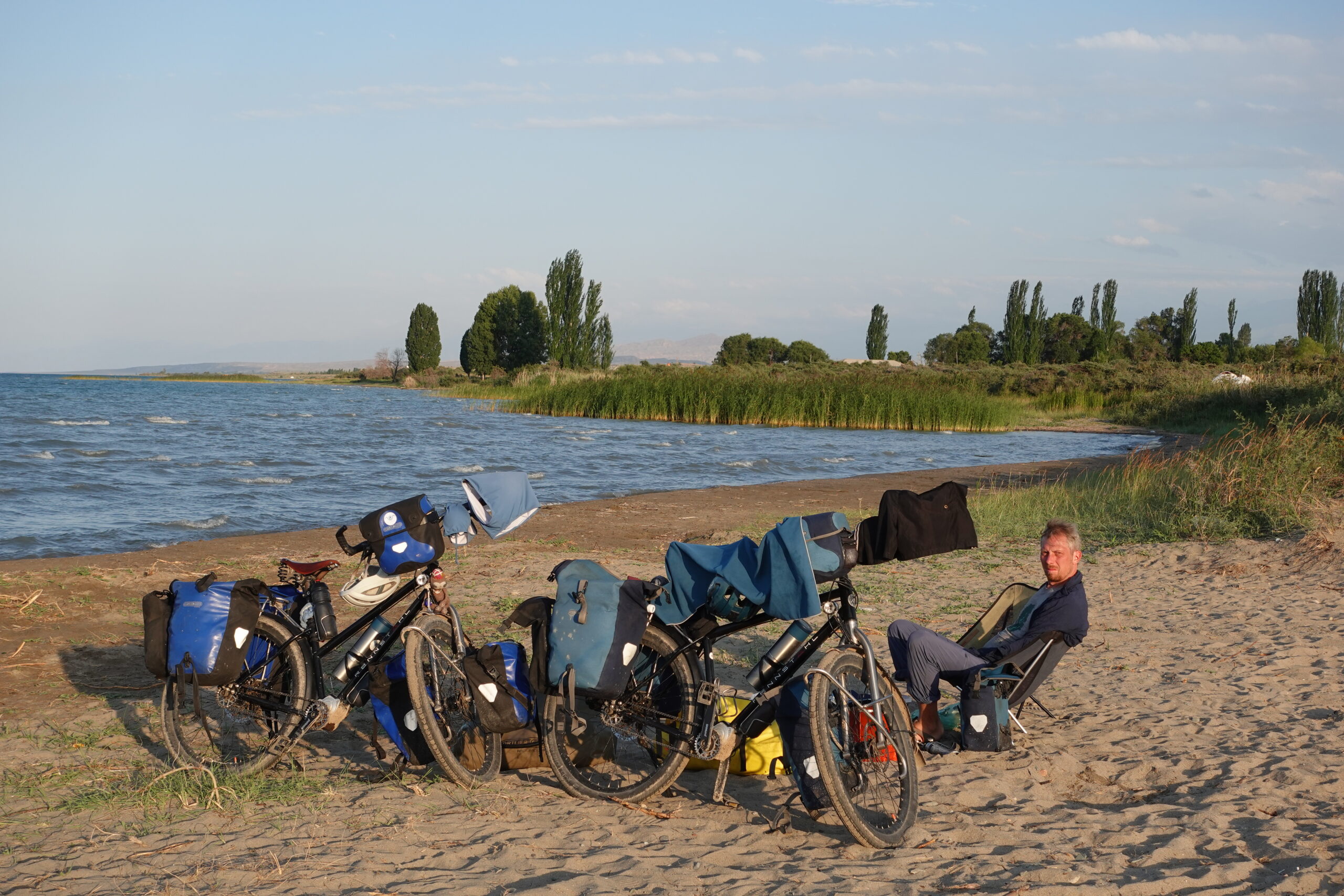
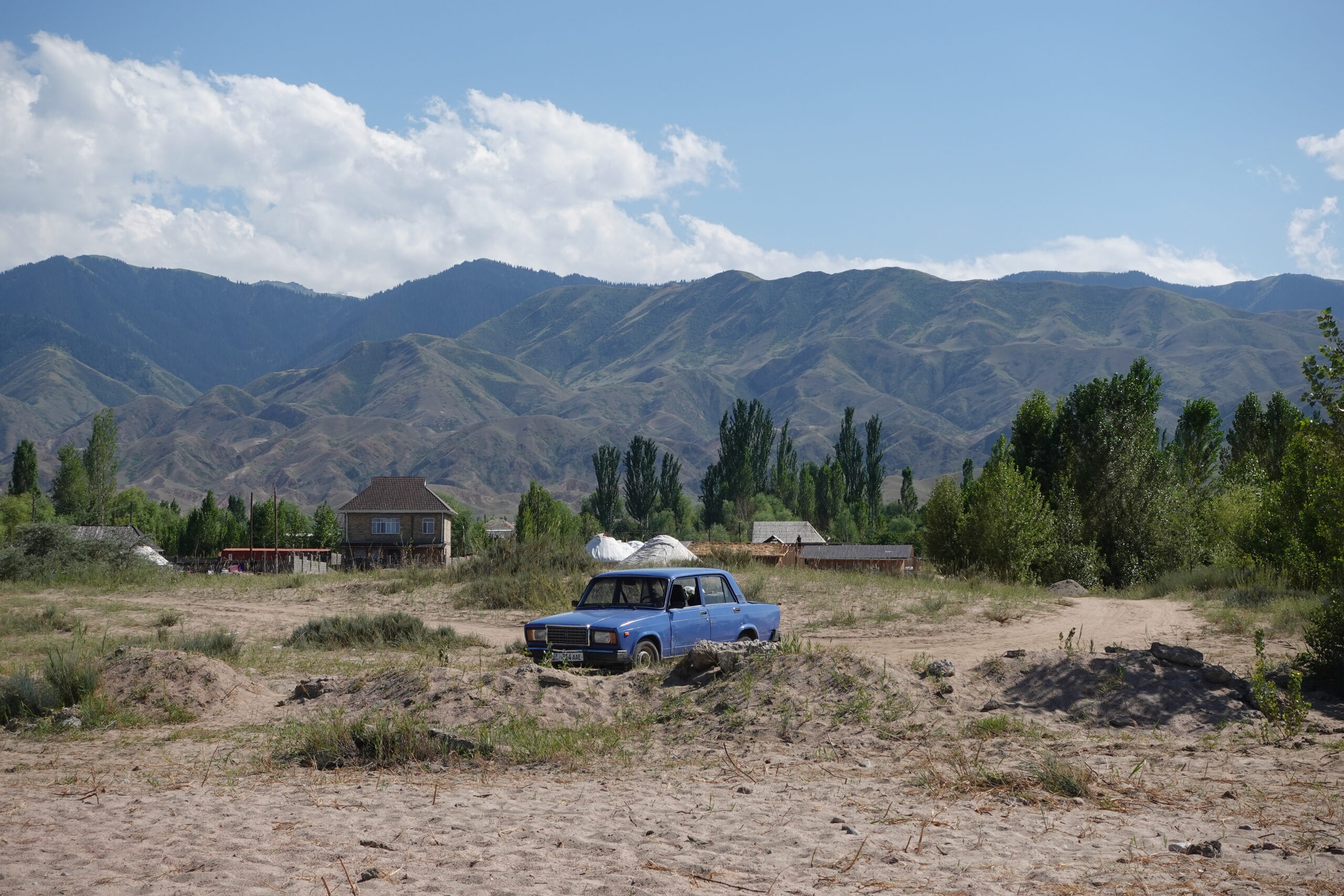
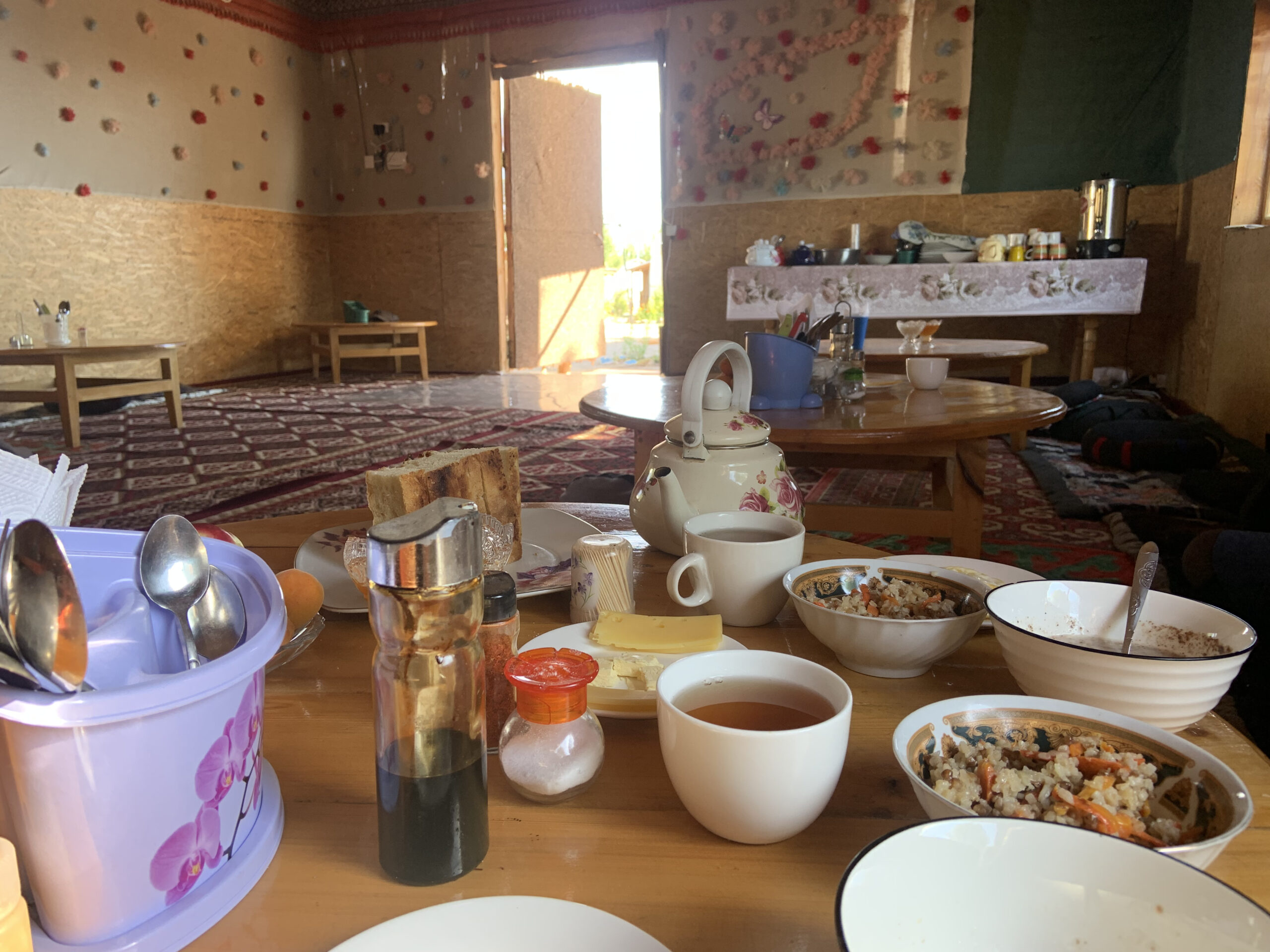
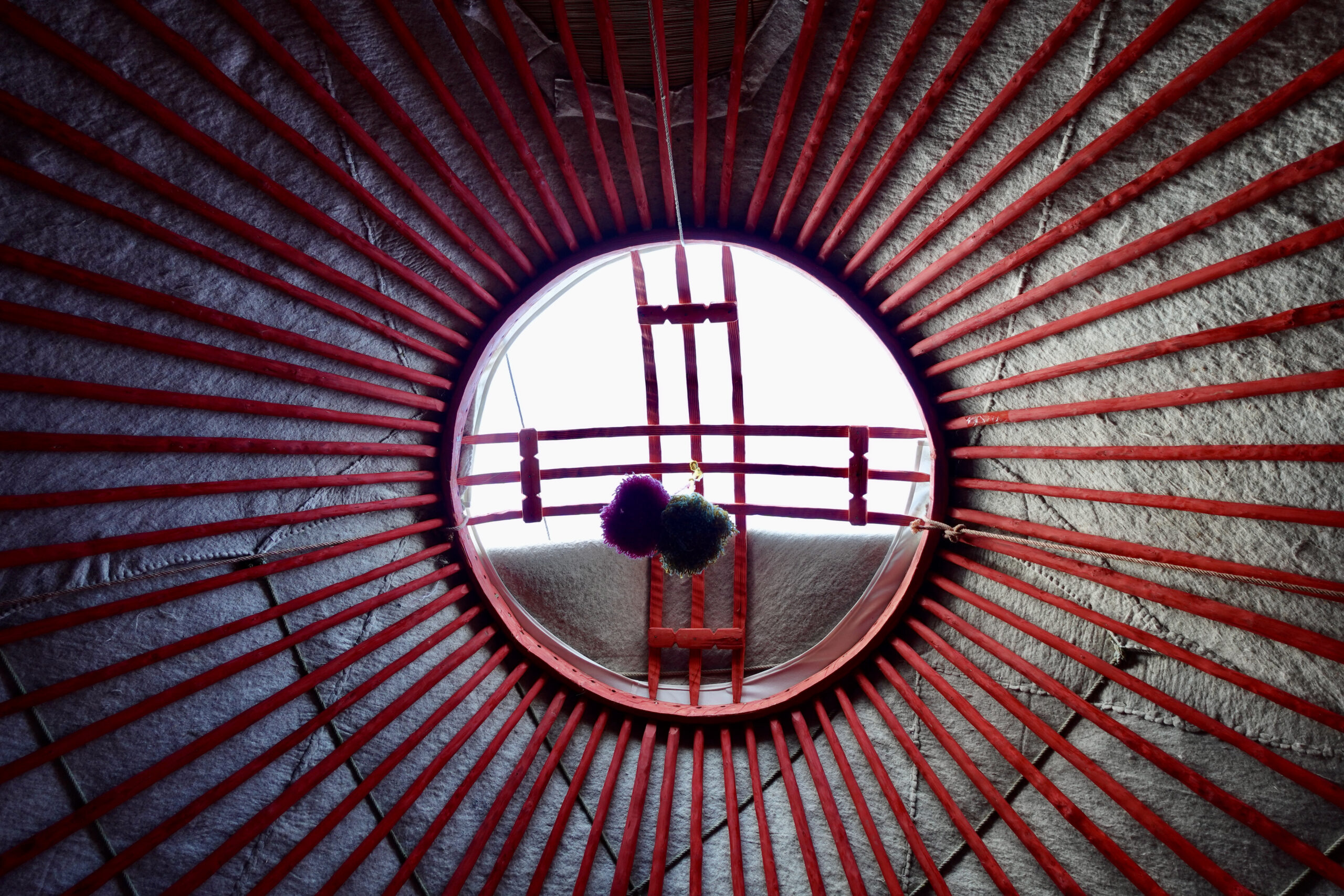
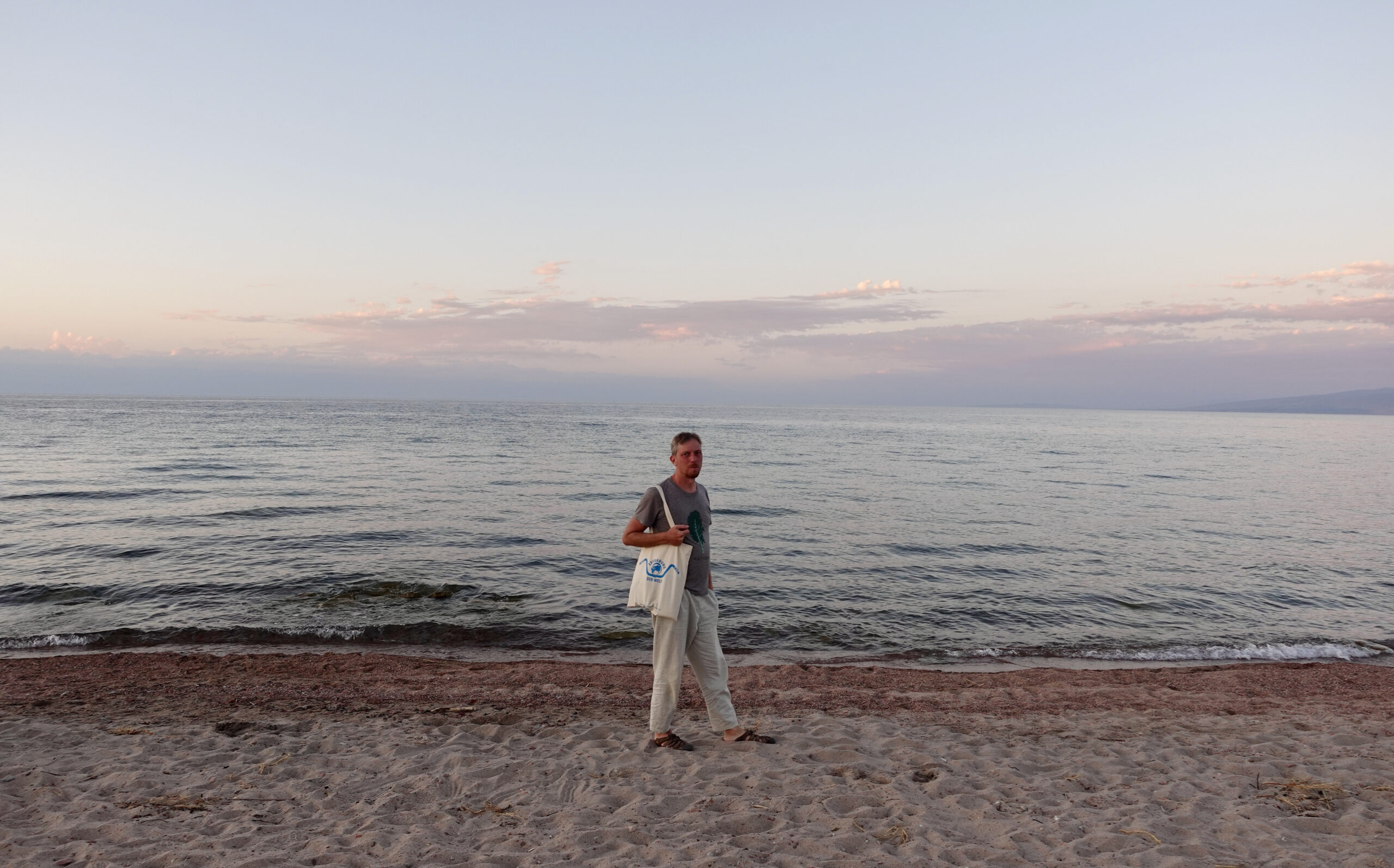

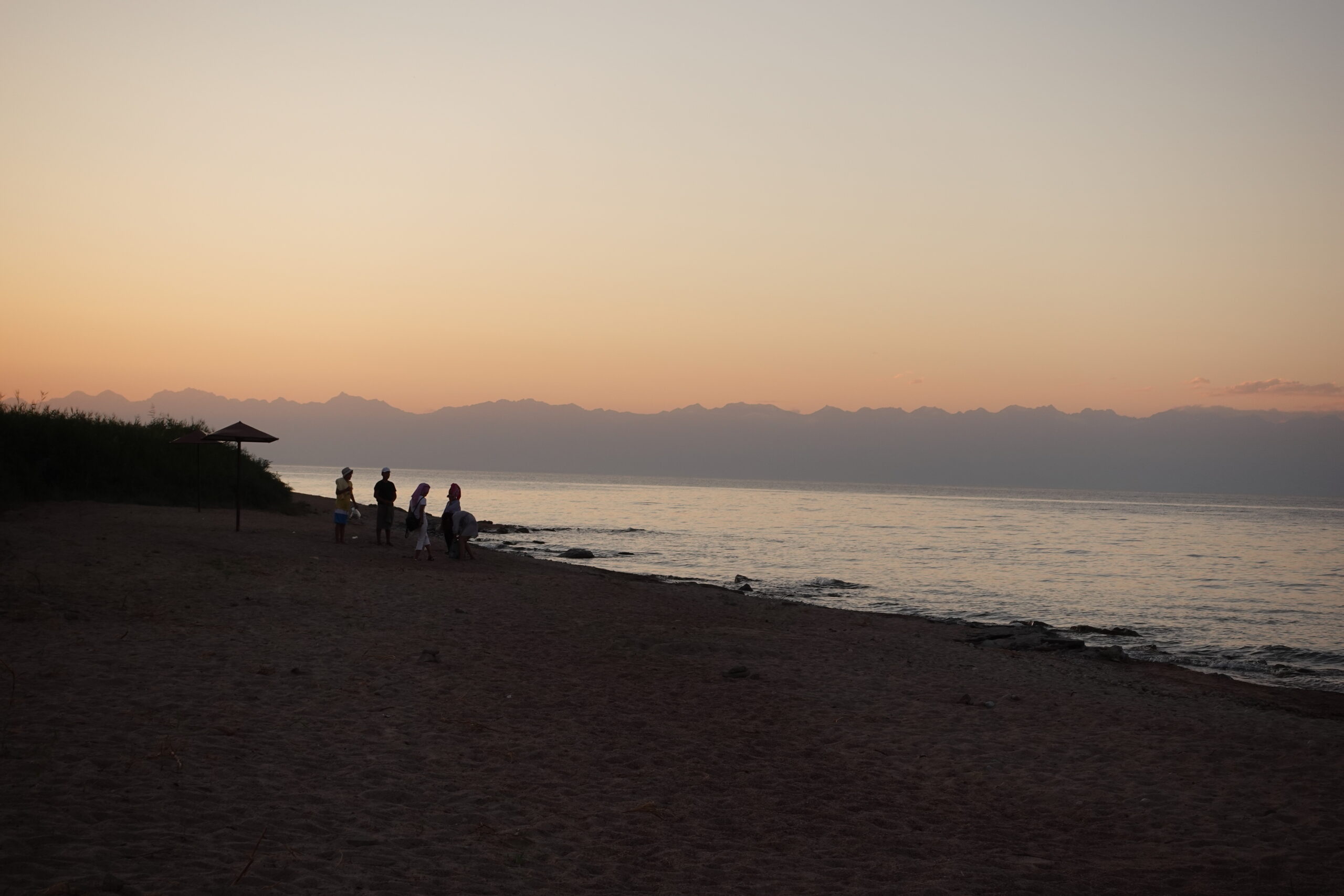
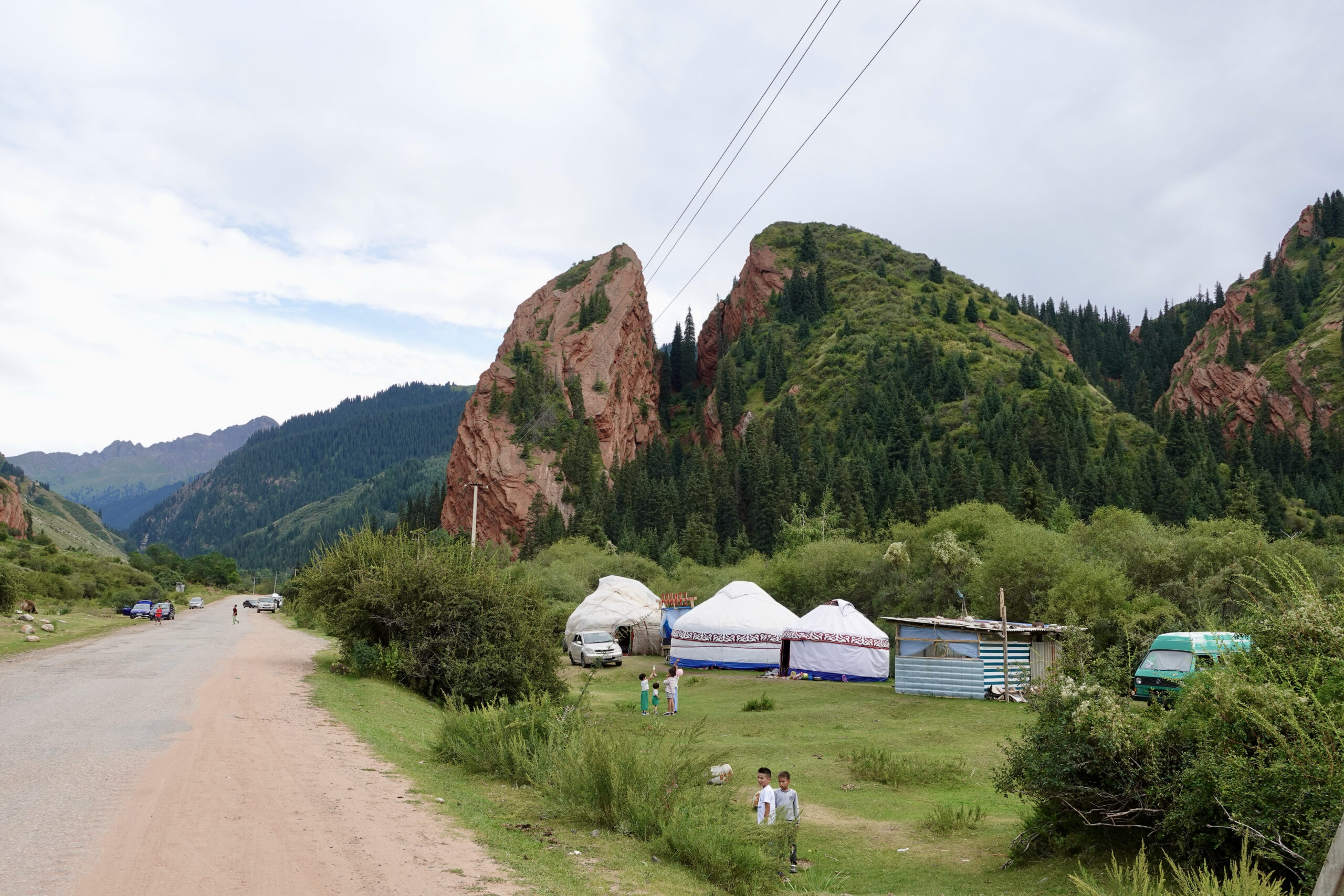

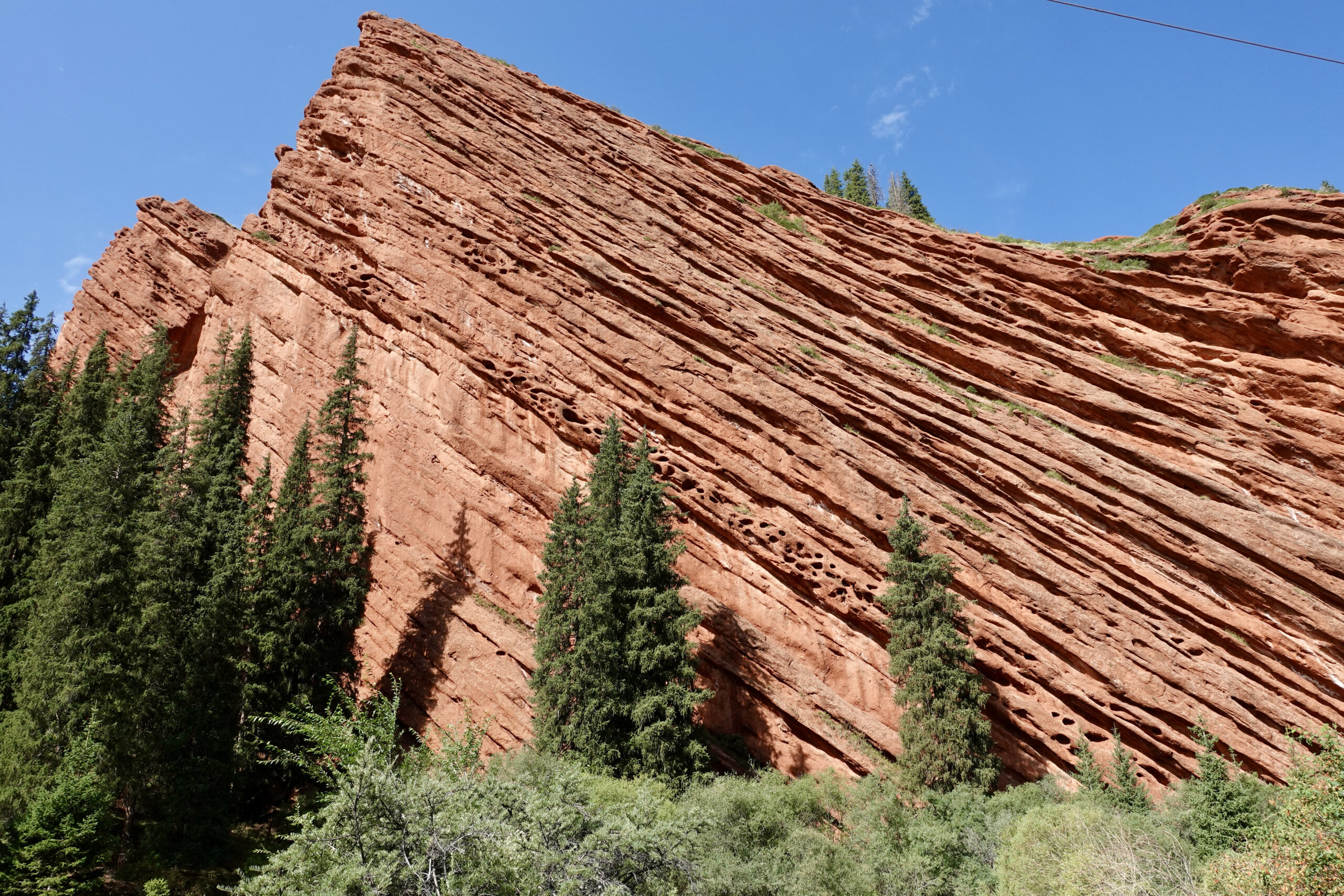
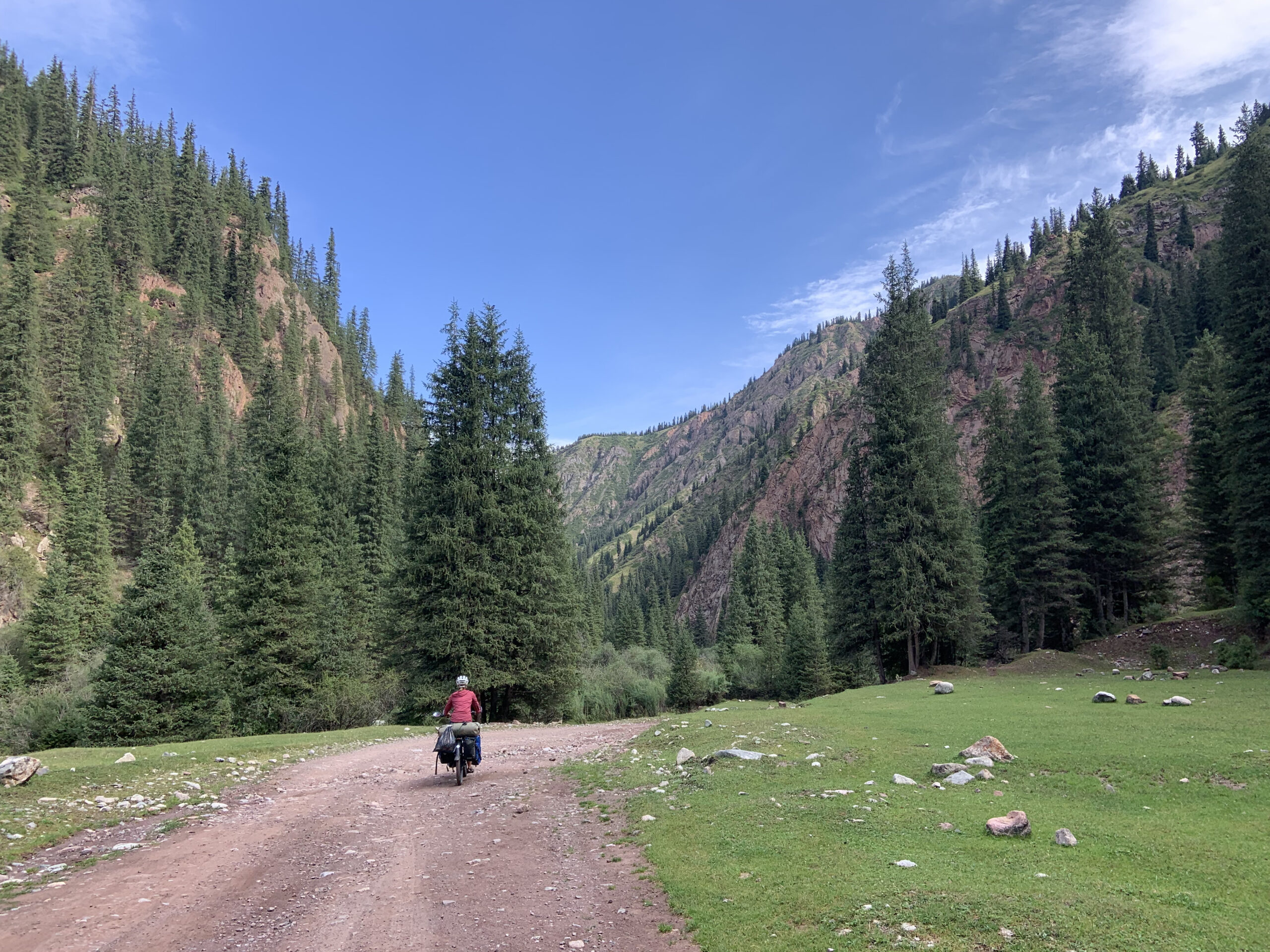
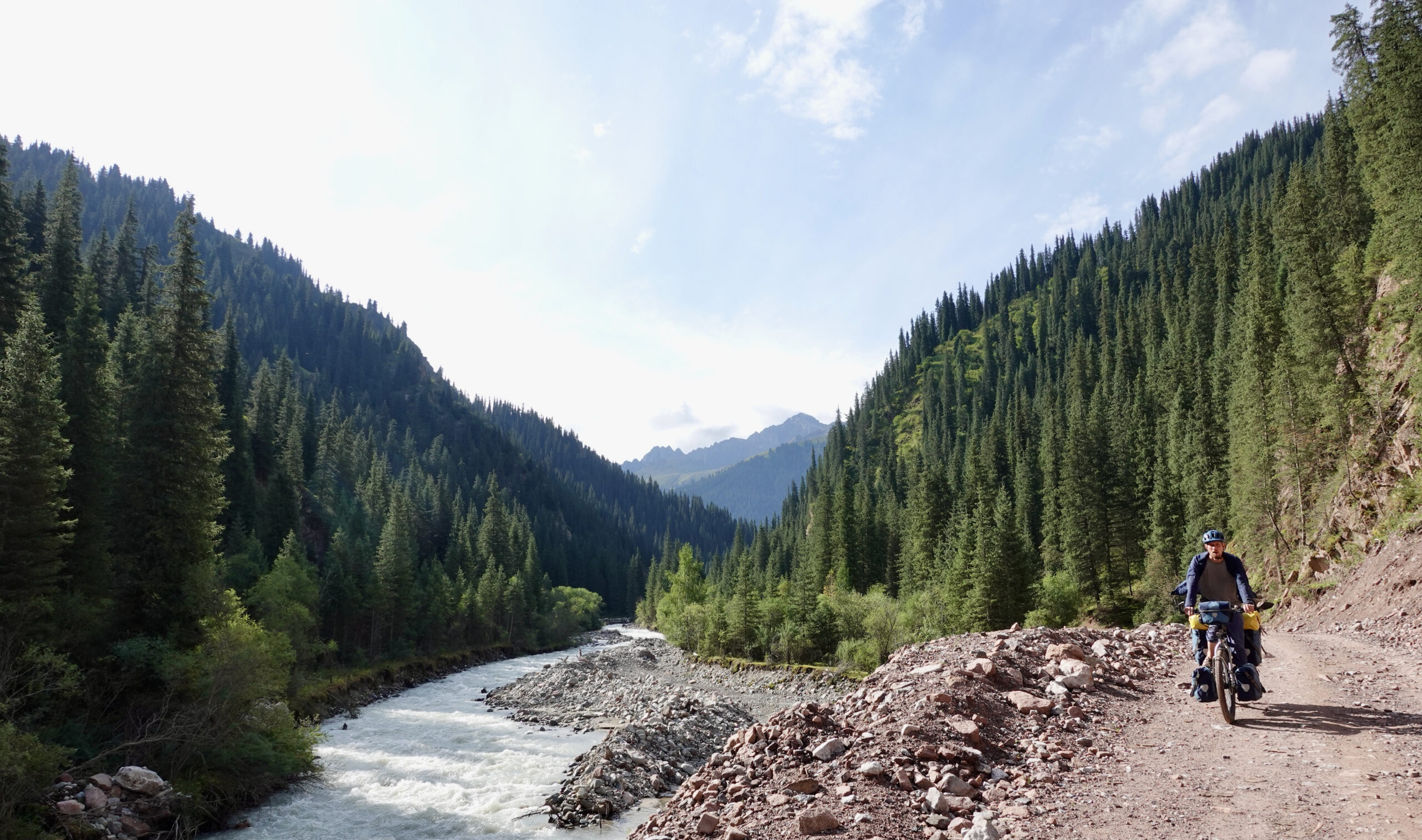
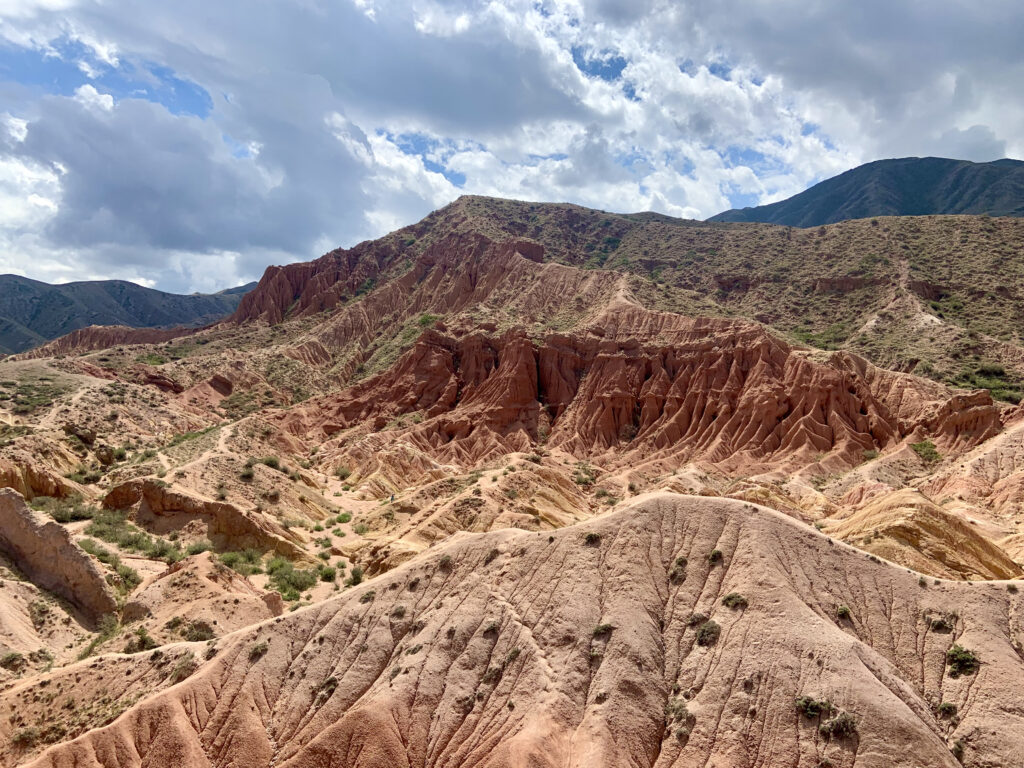
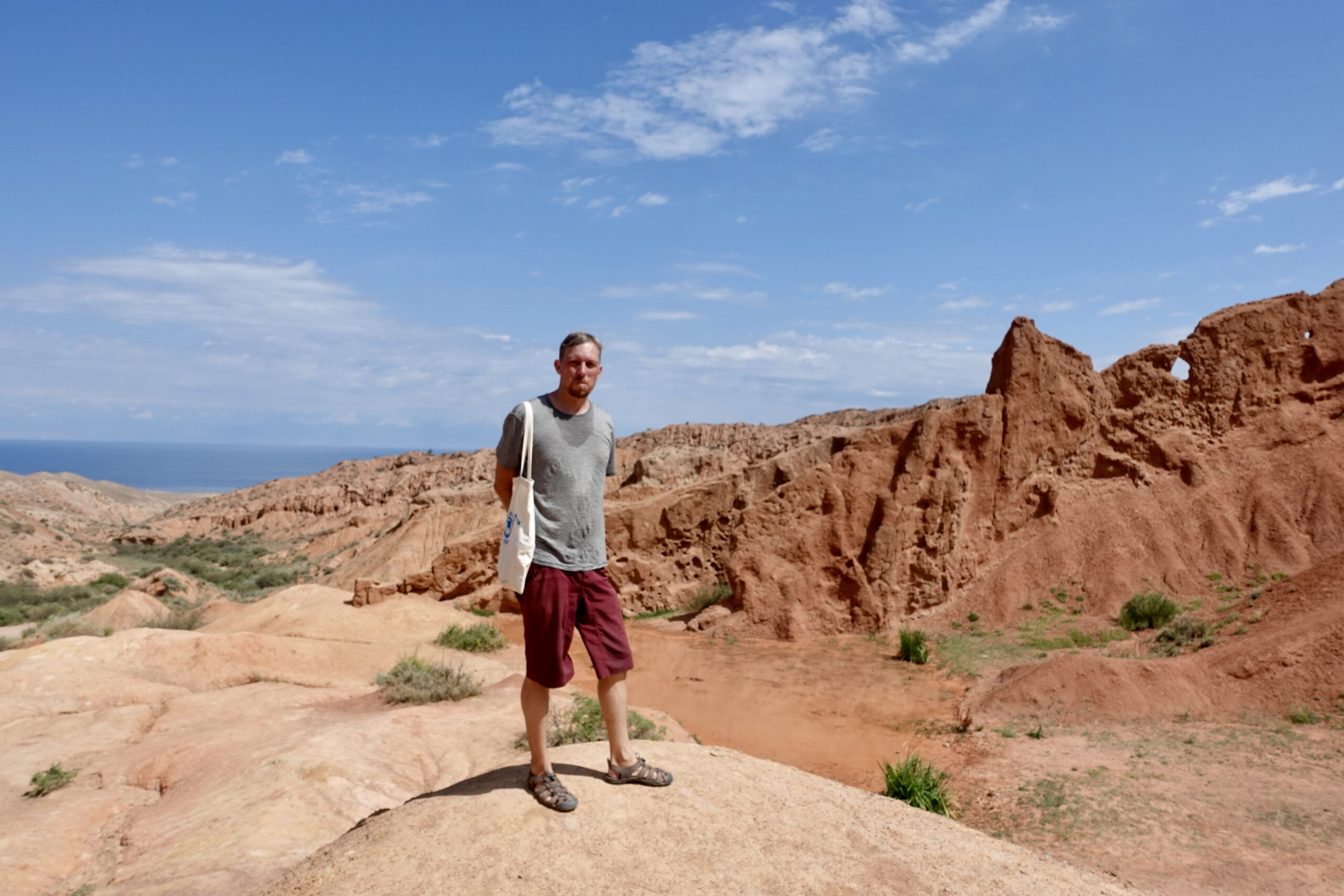
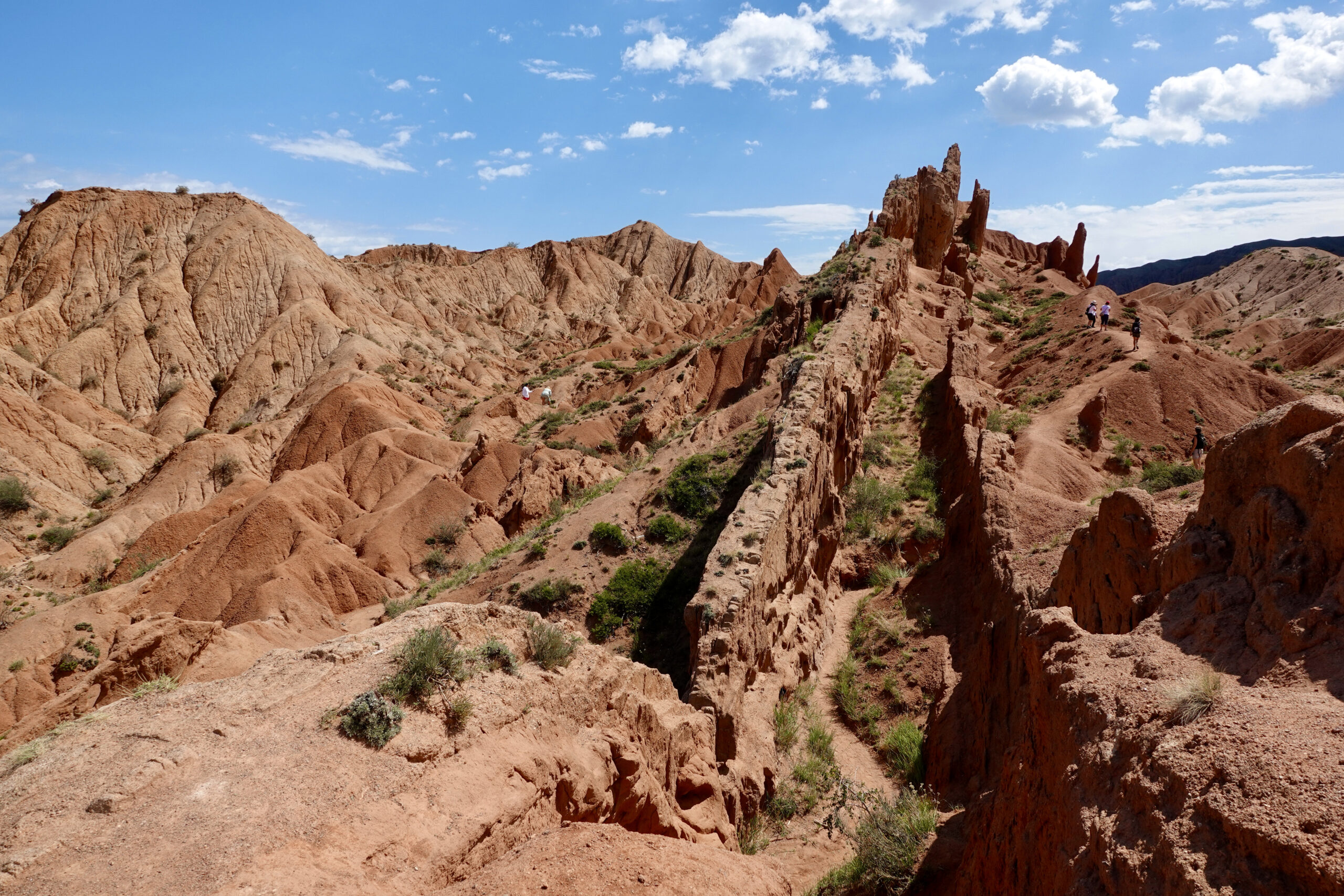
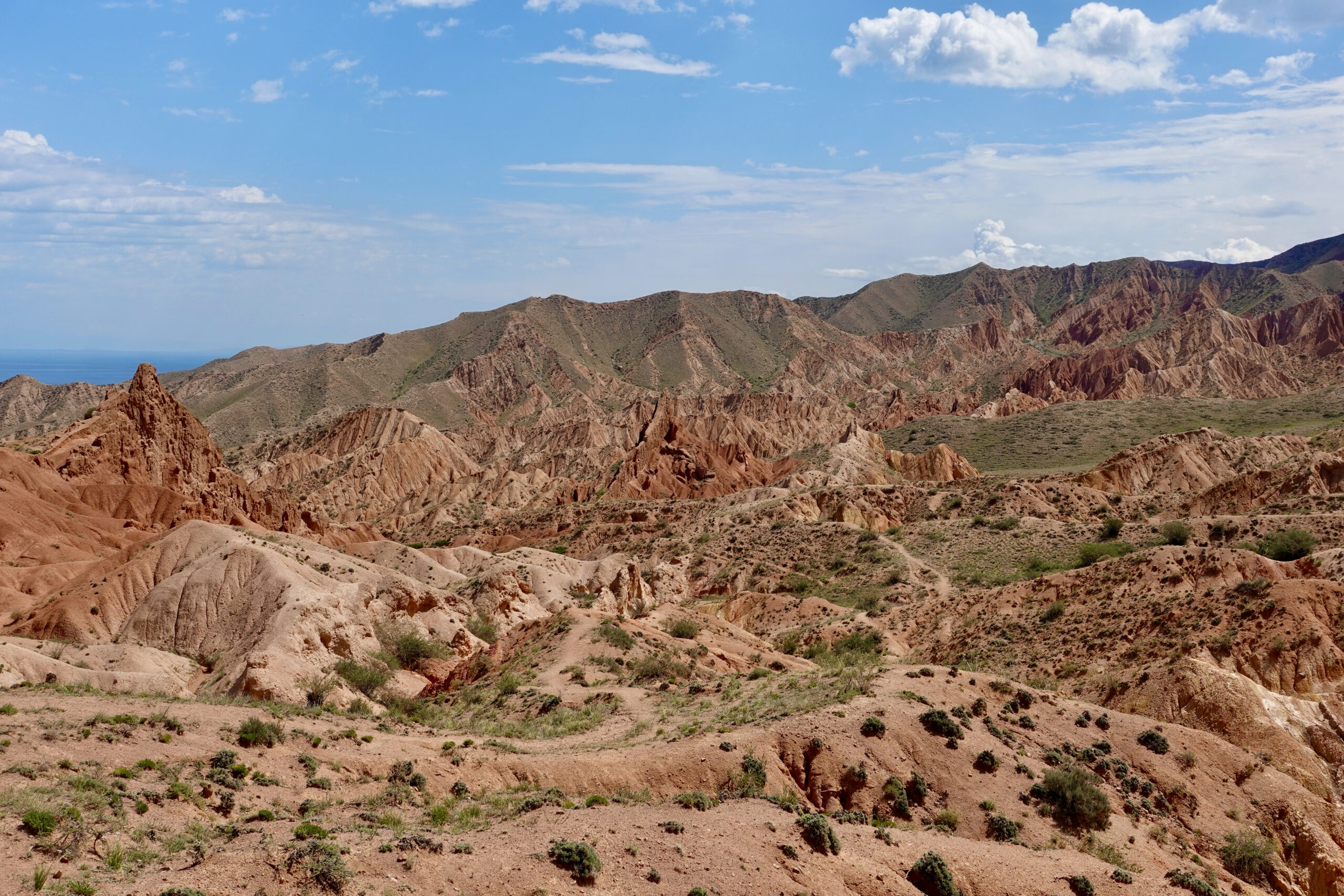
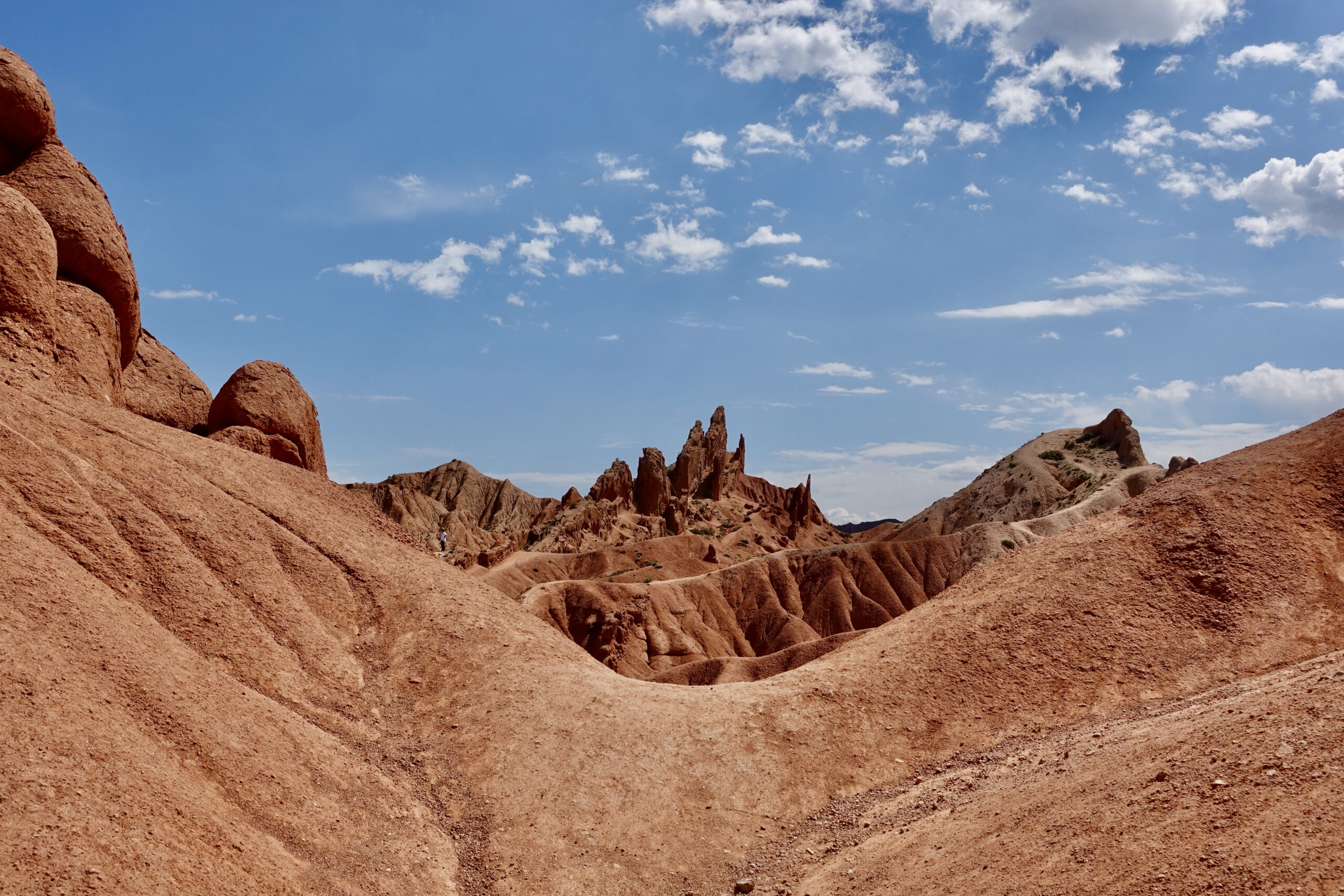
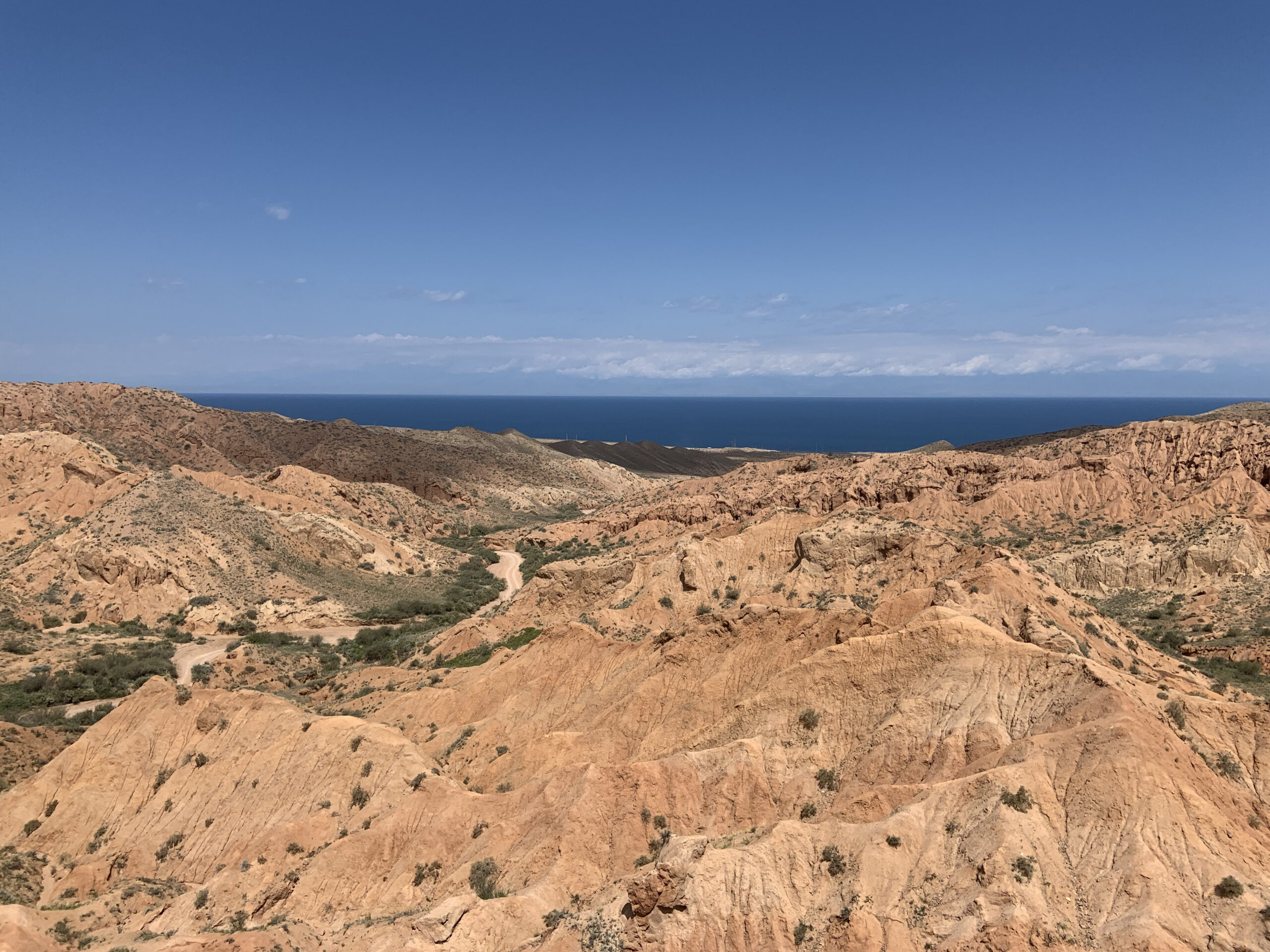

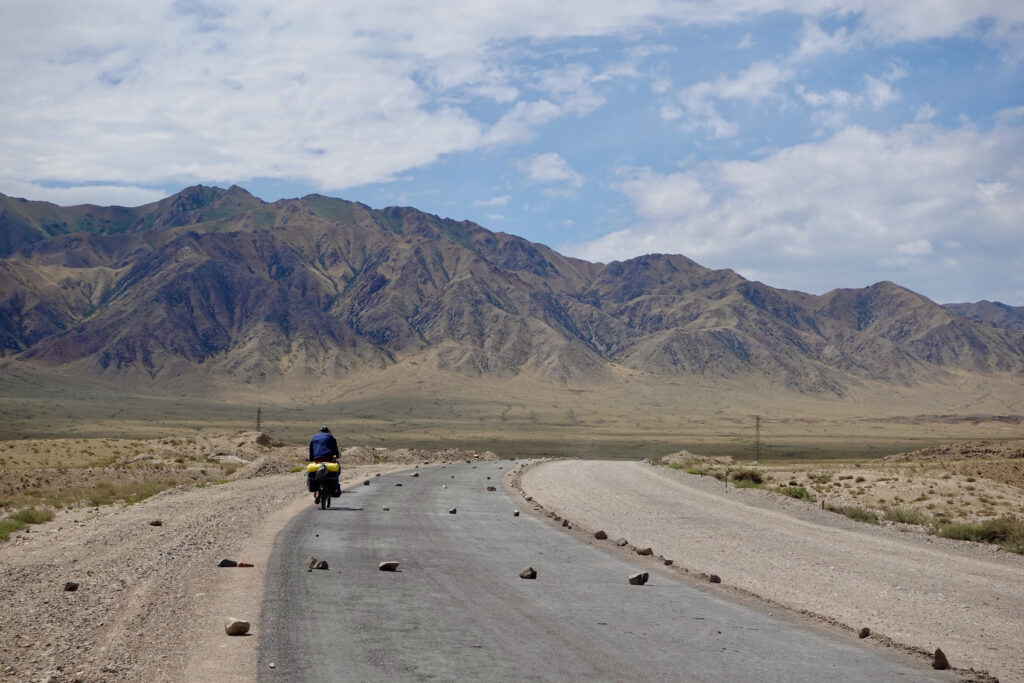
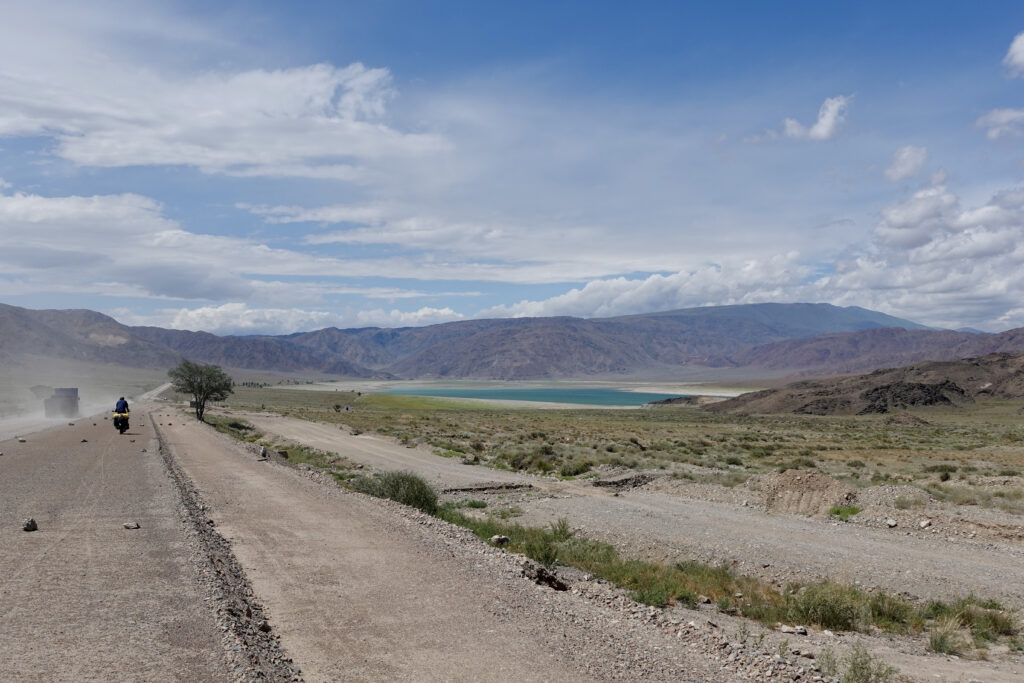
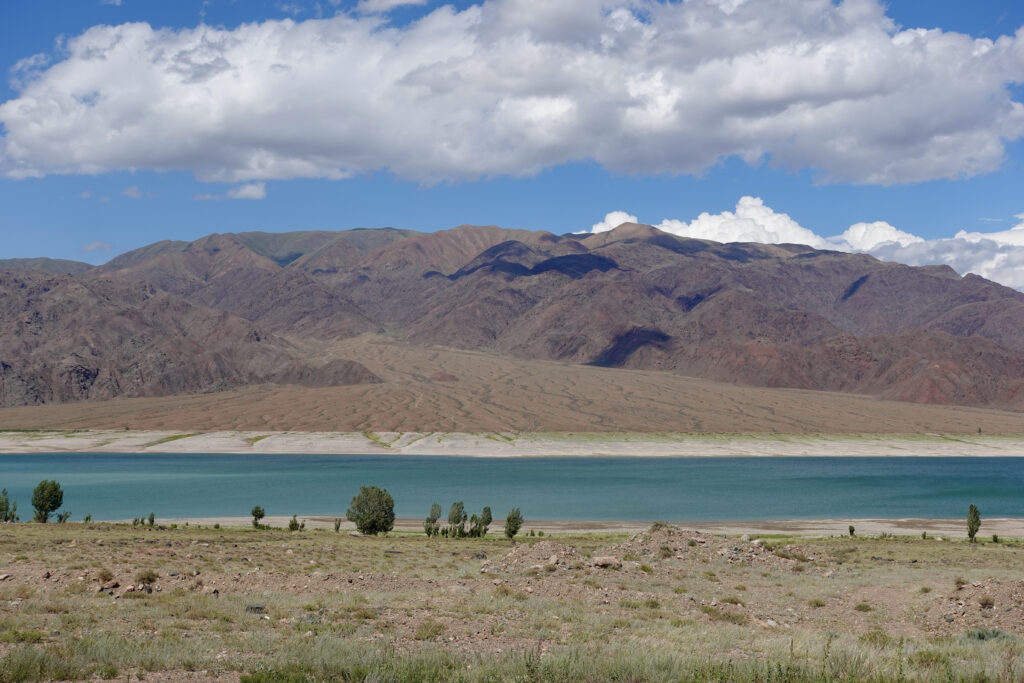
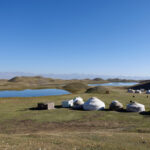
Leave a Reply